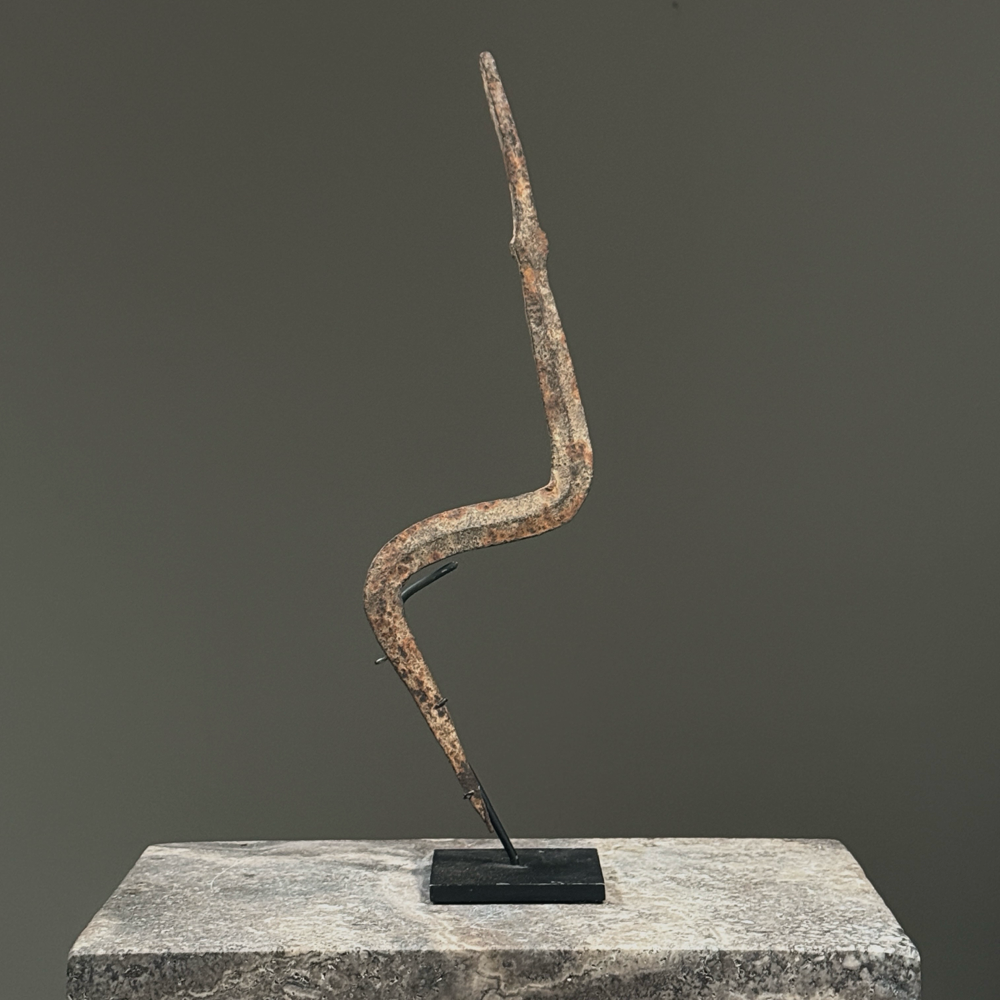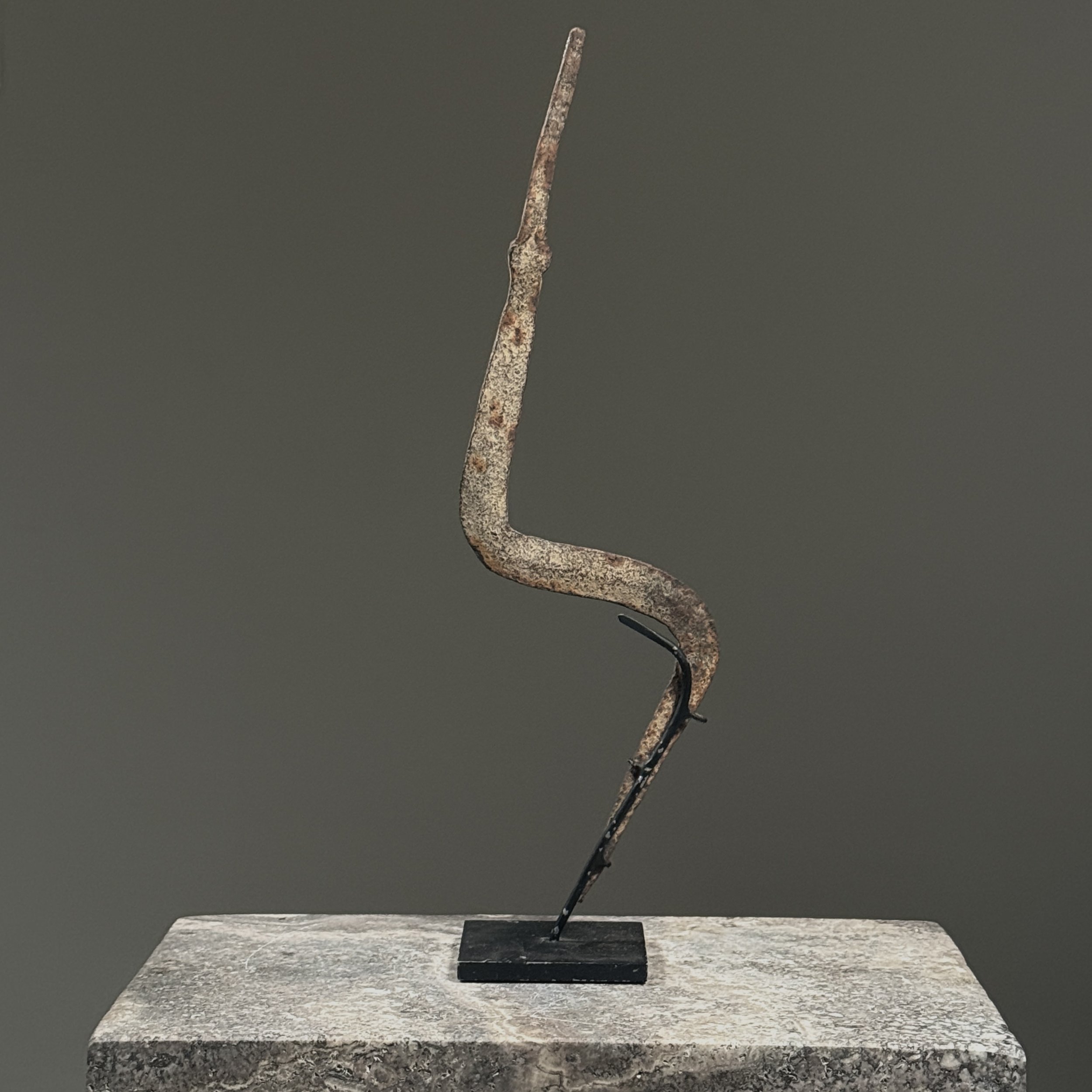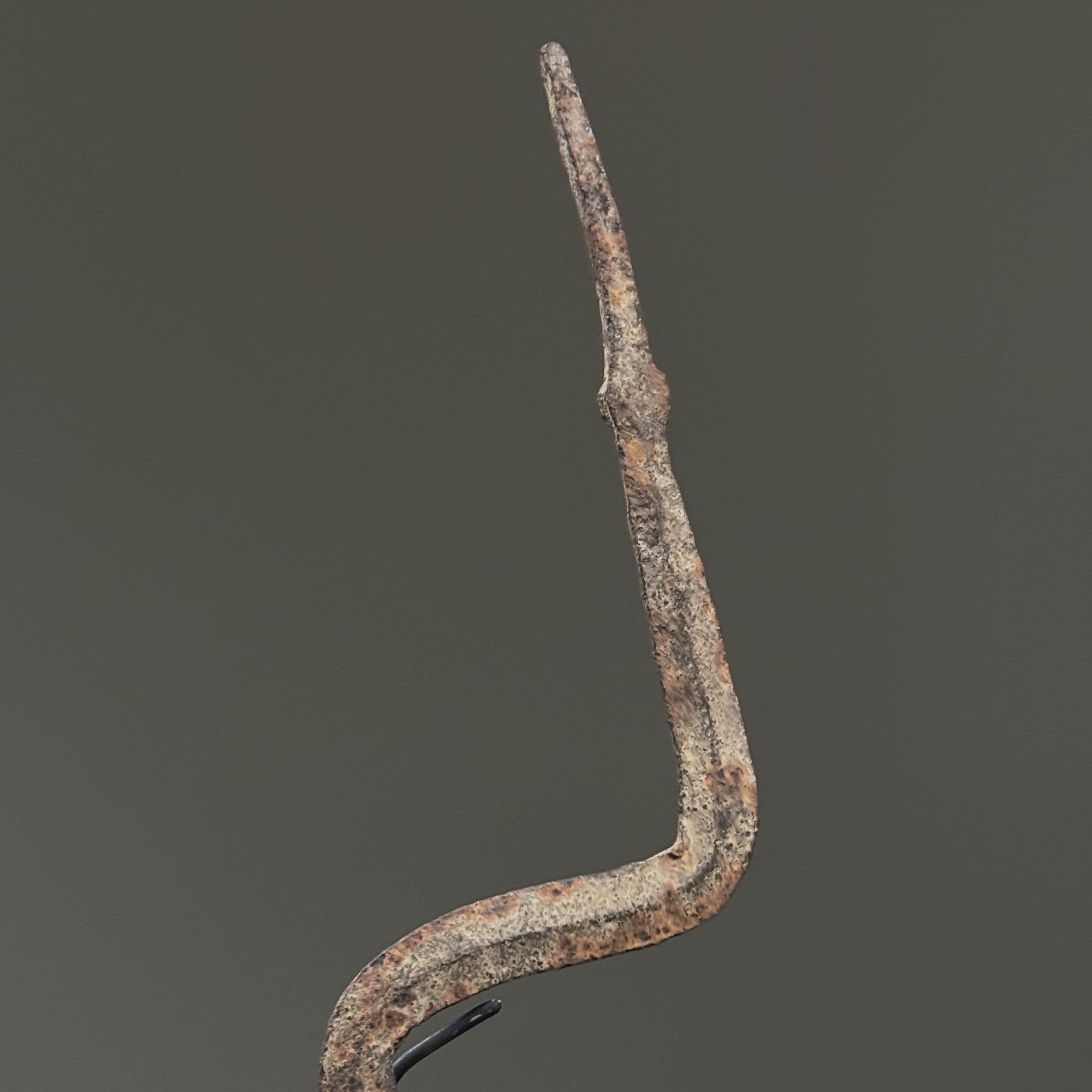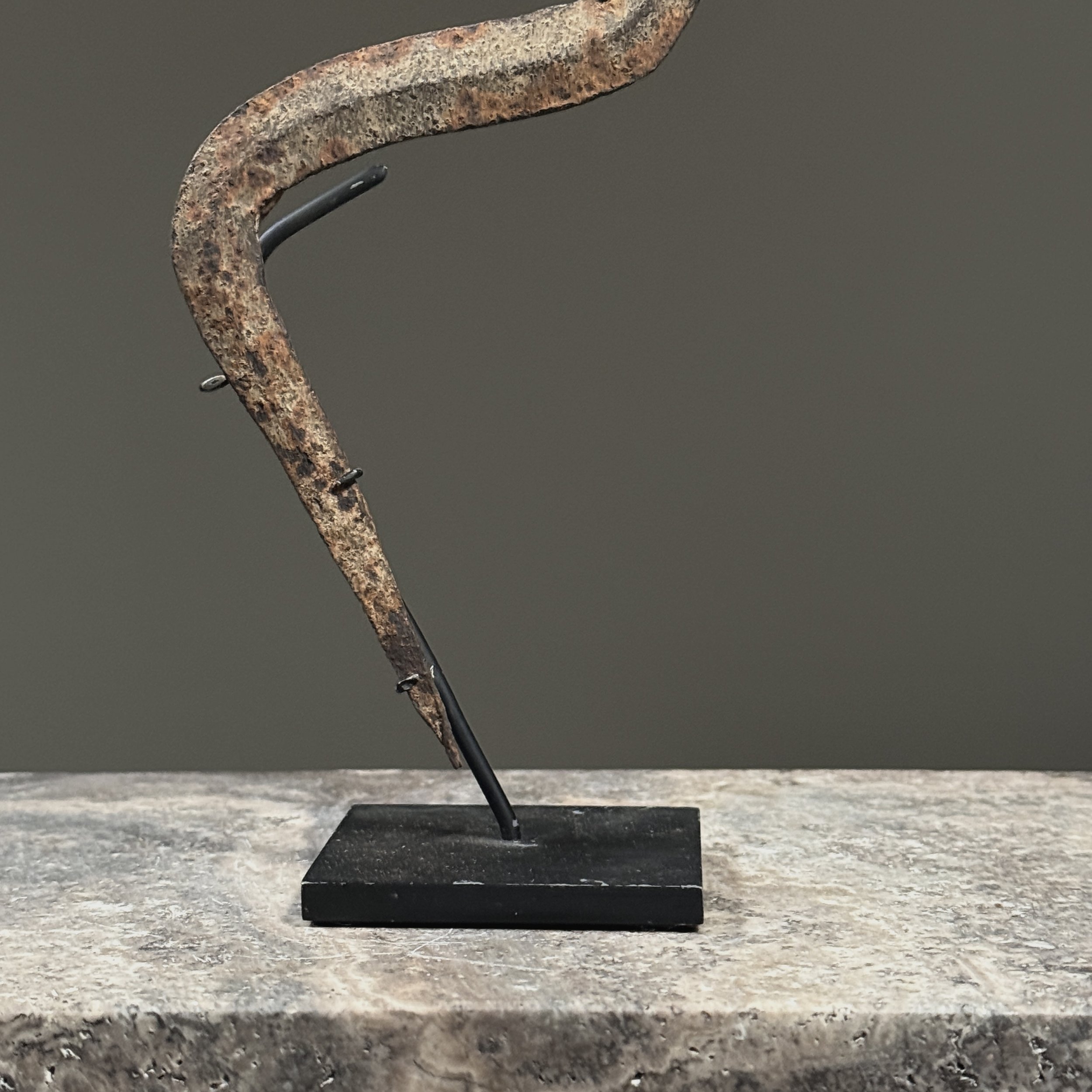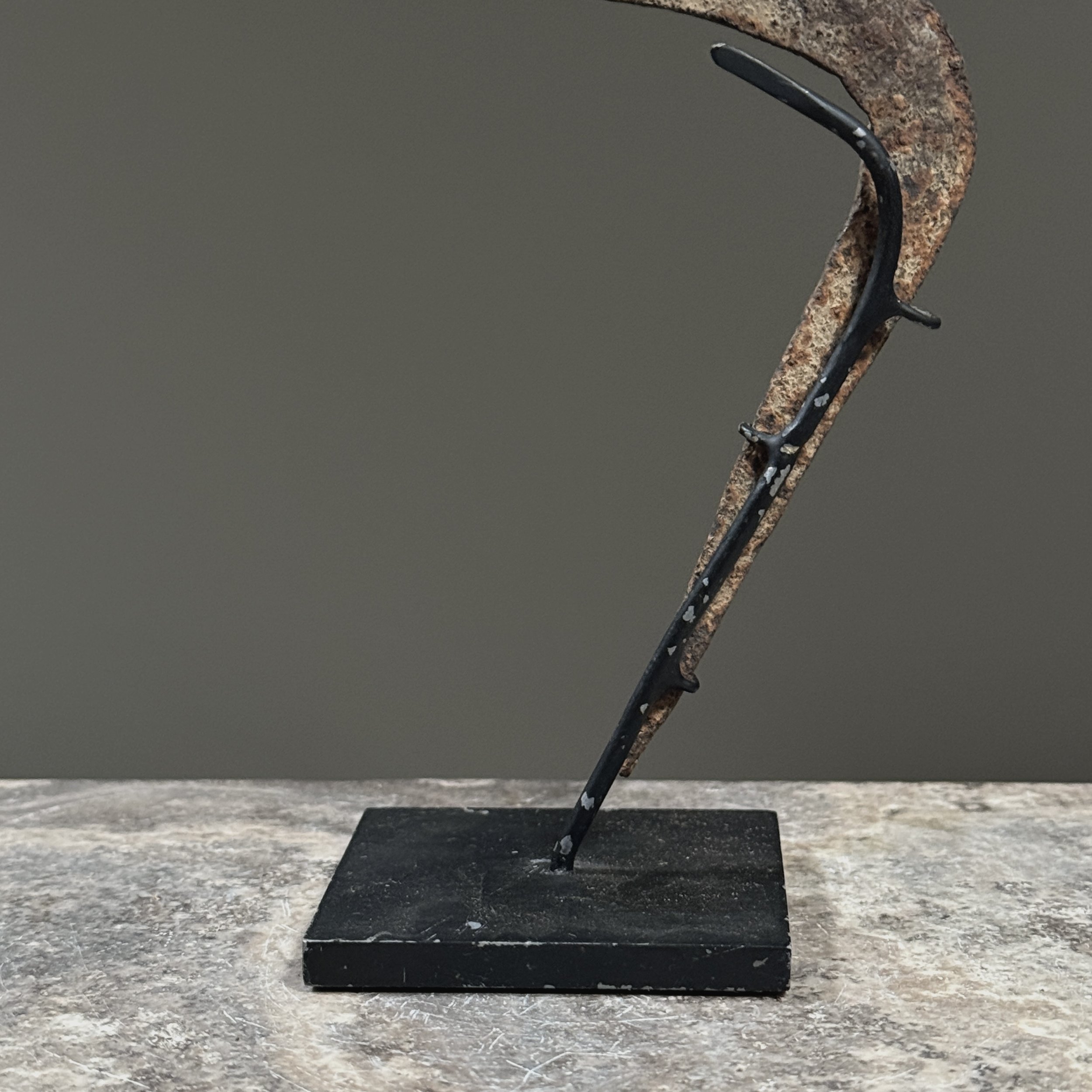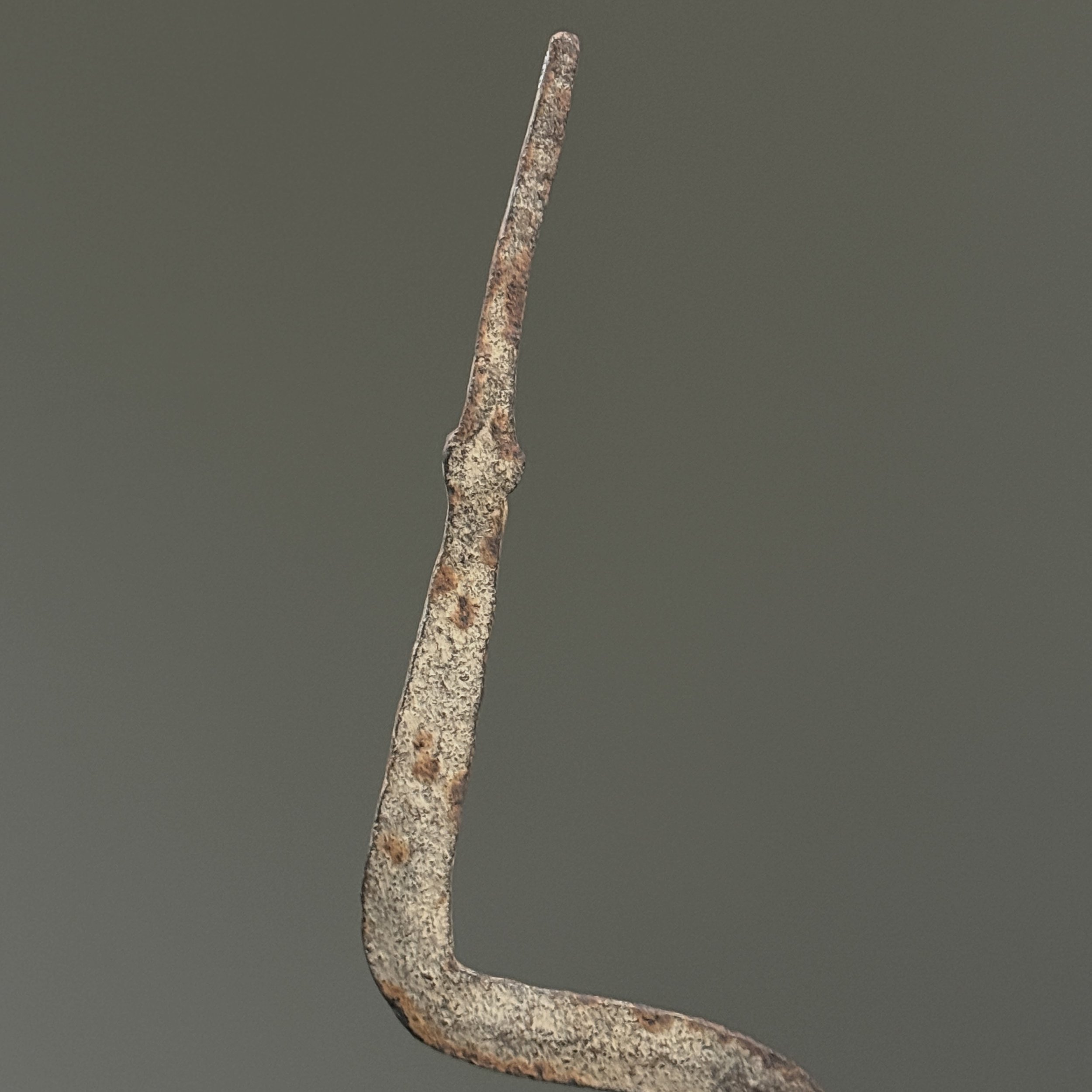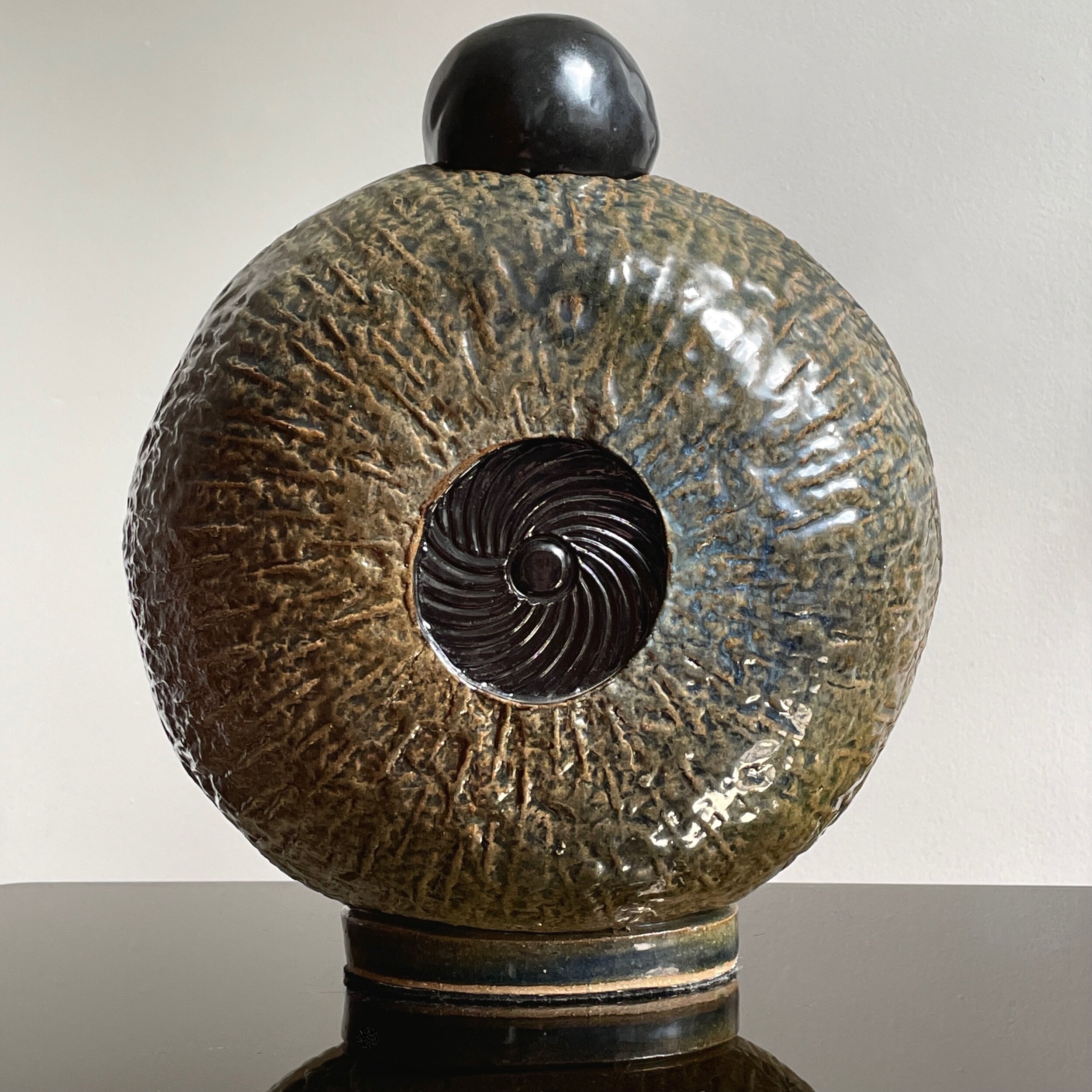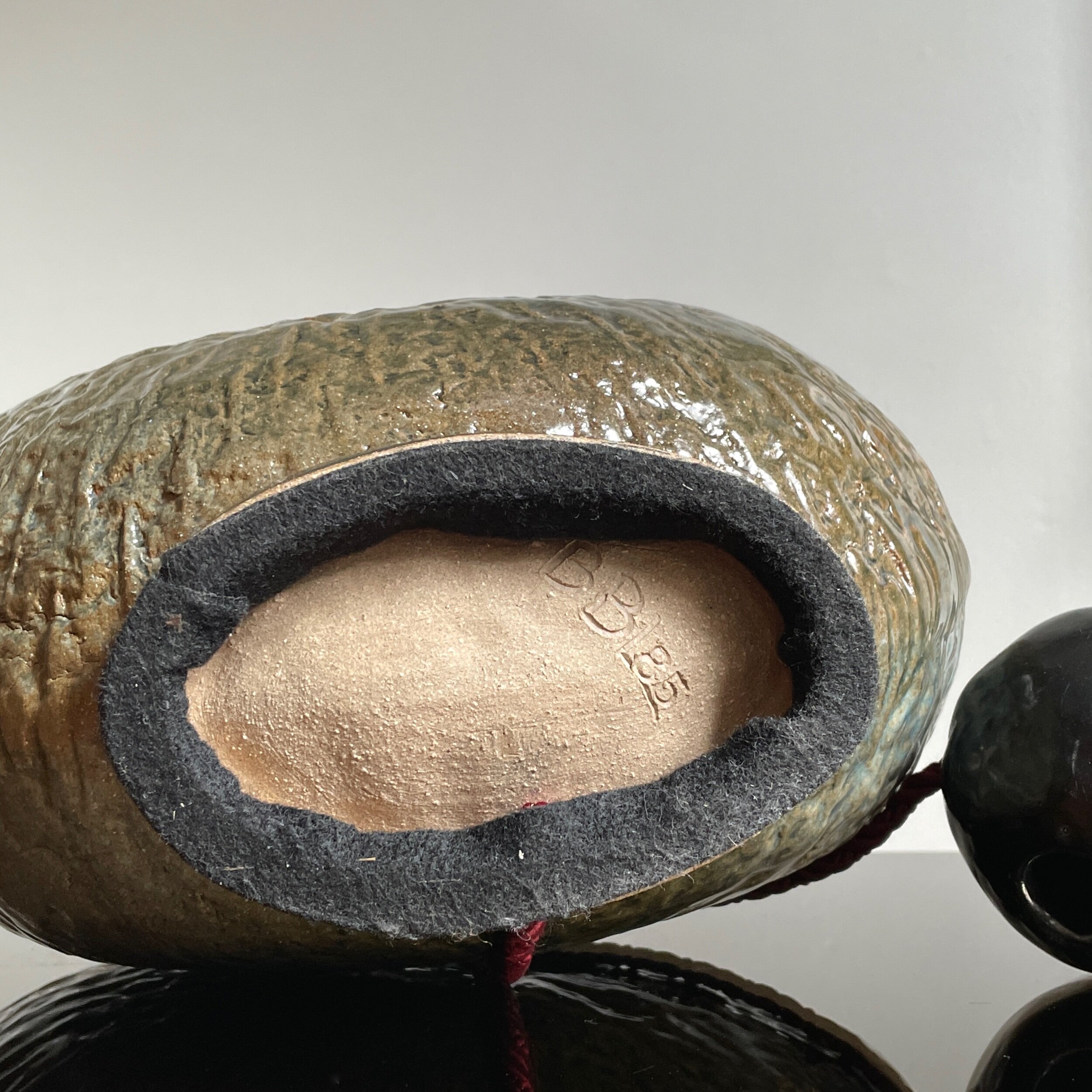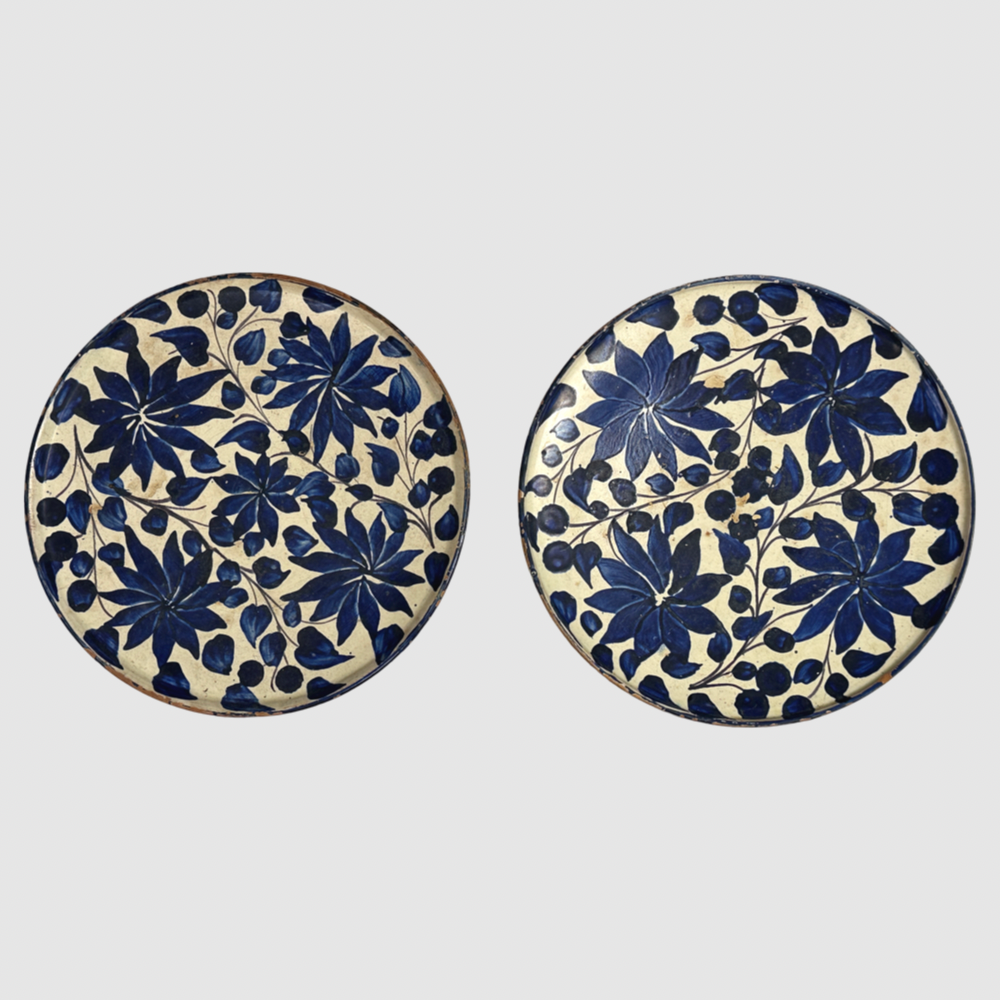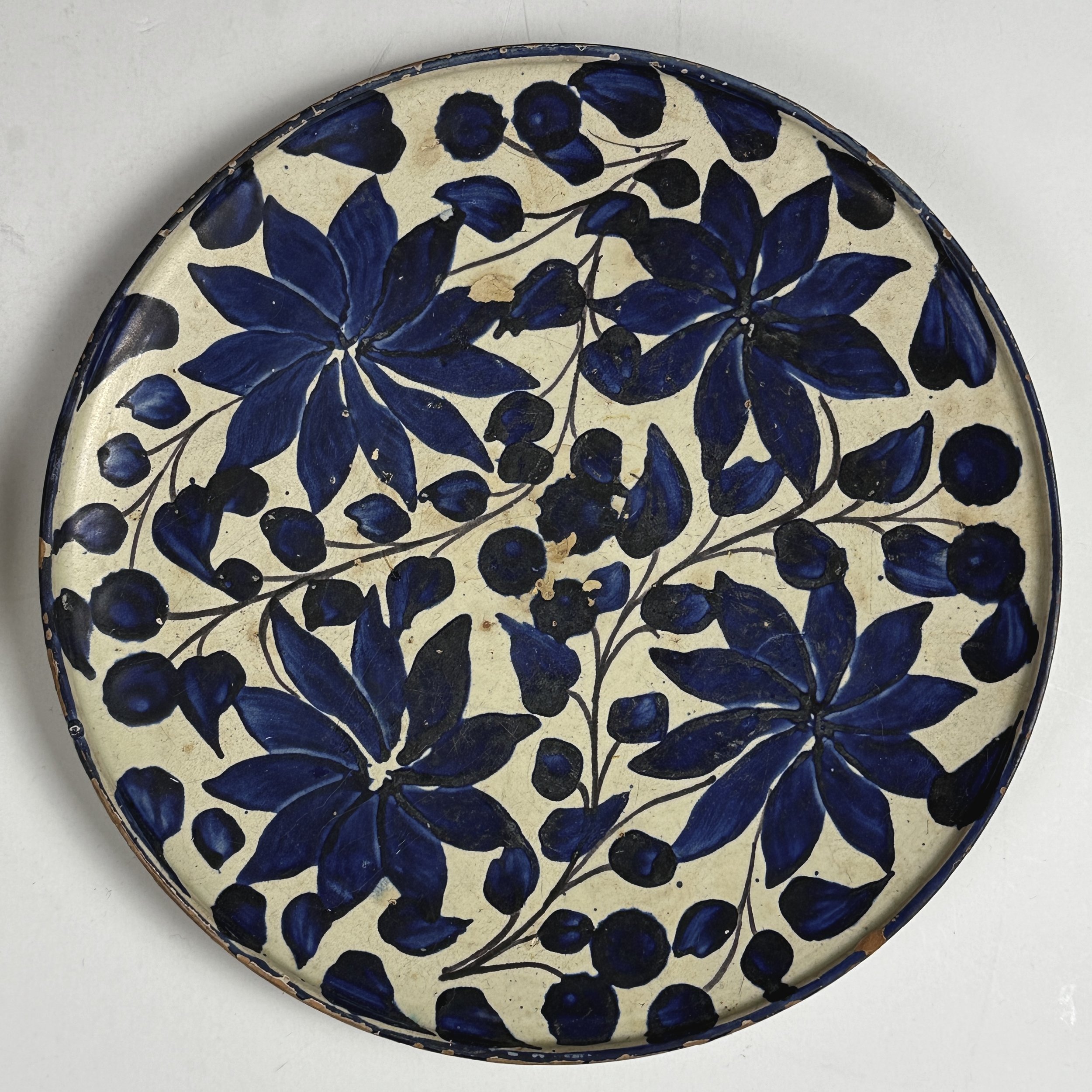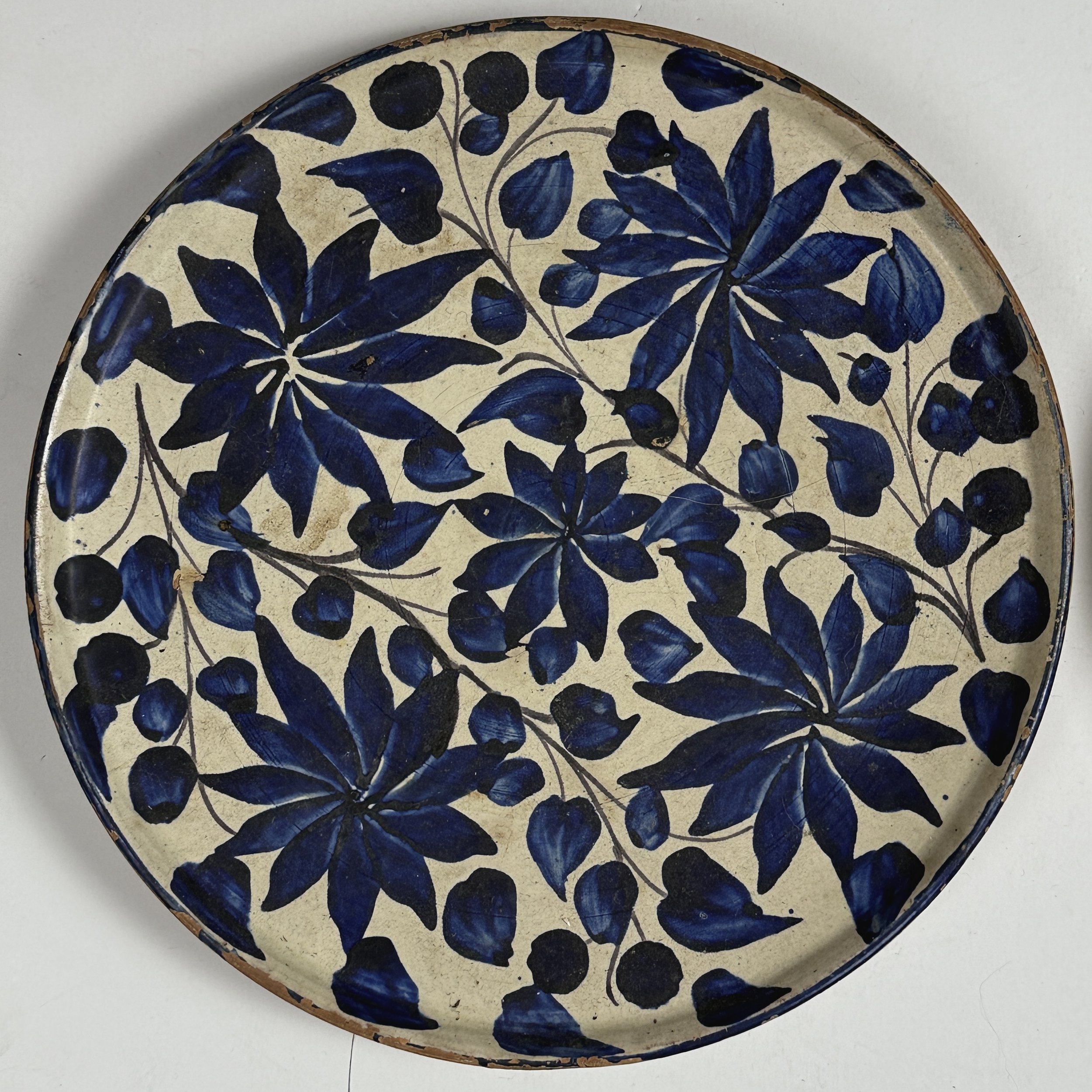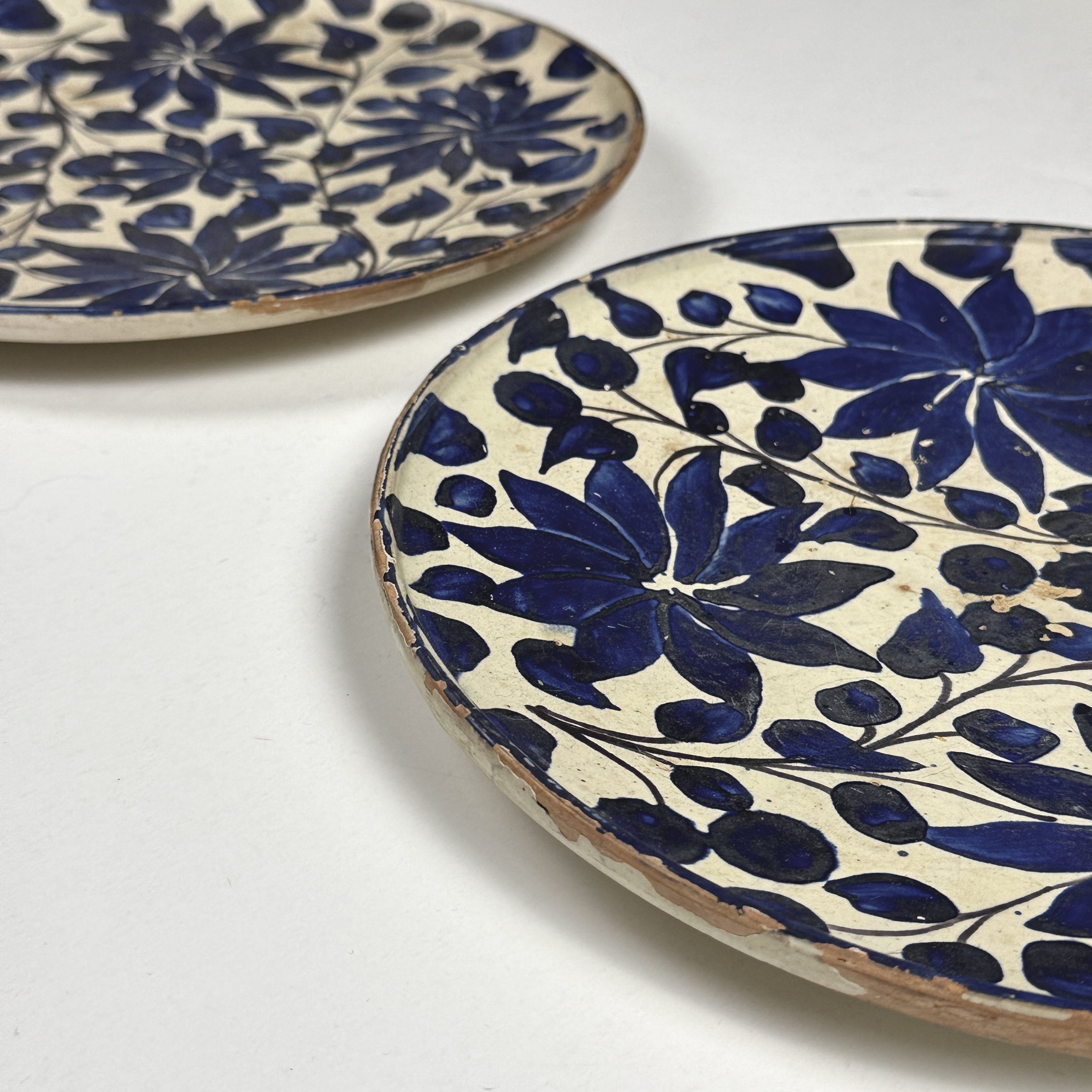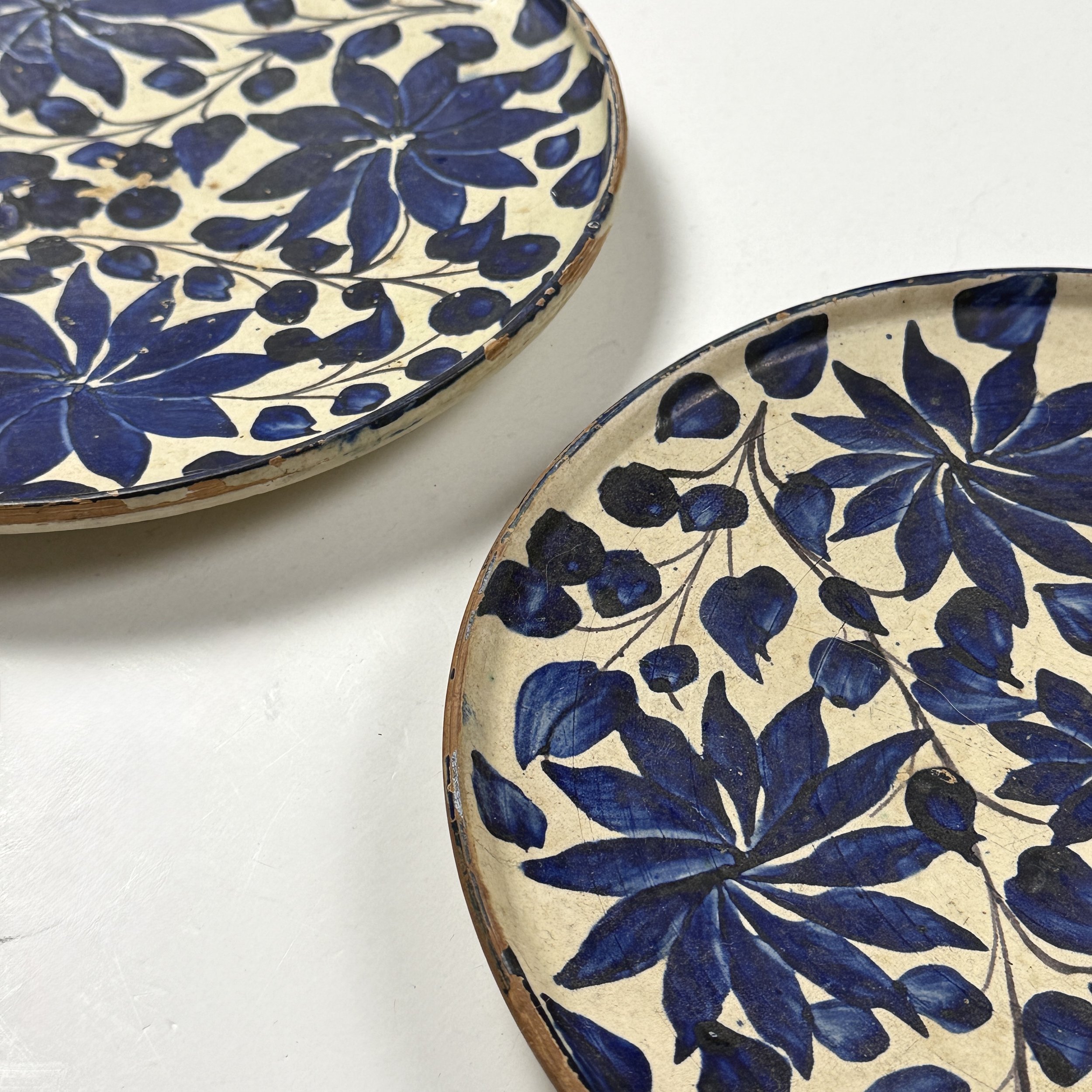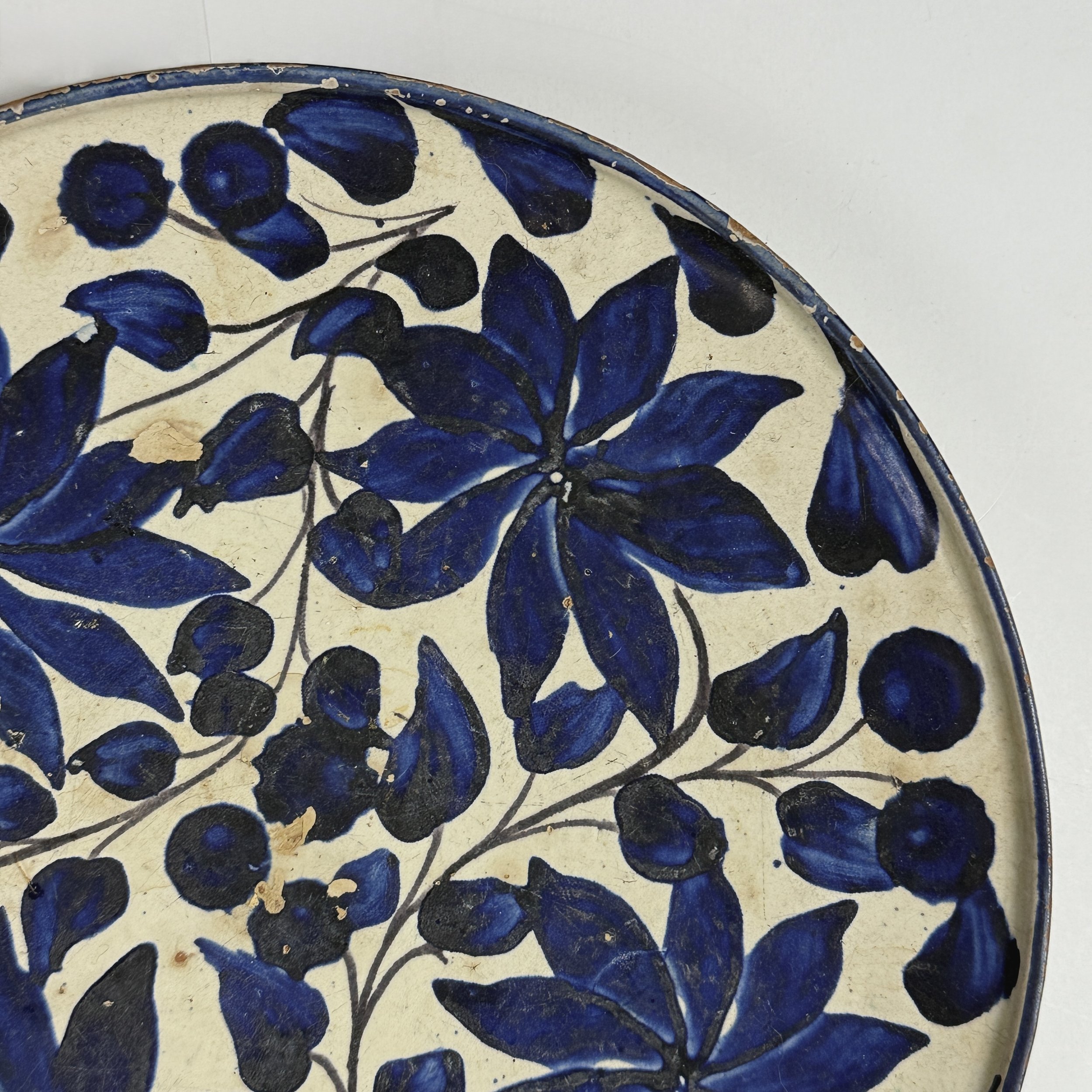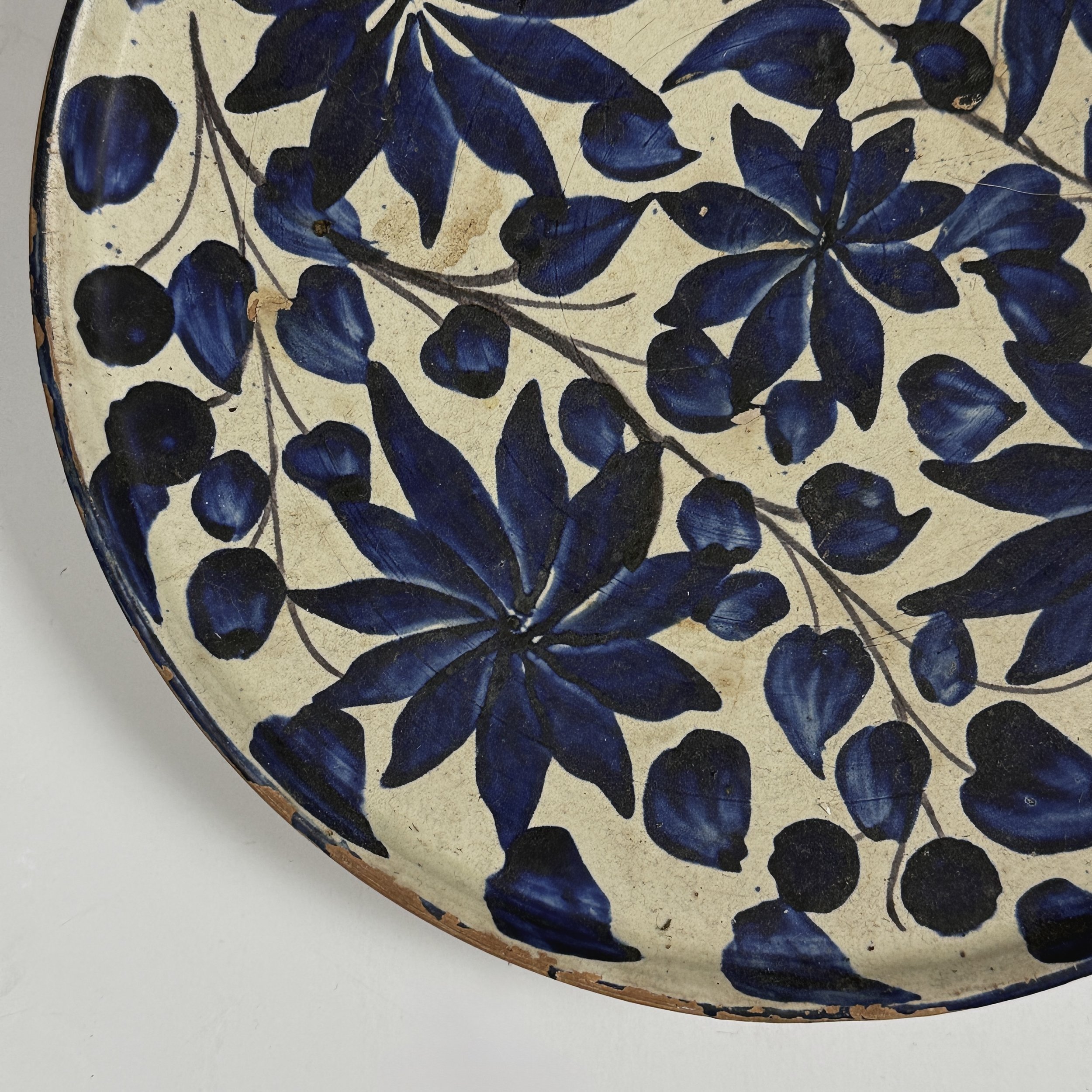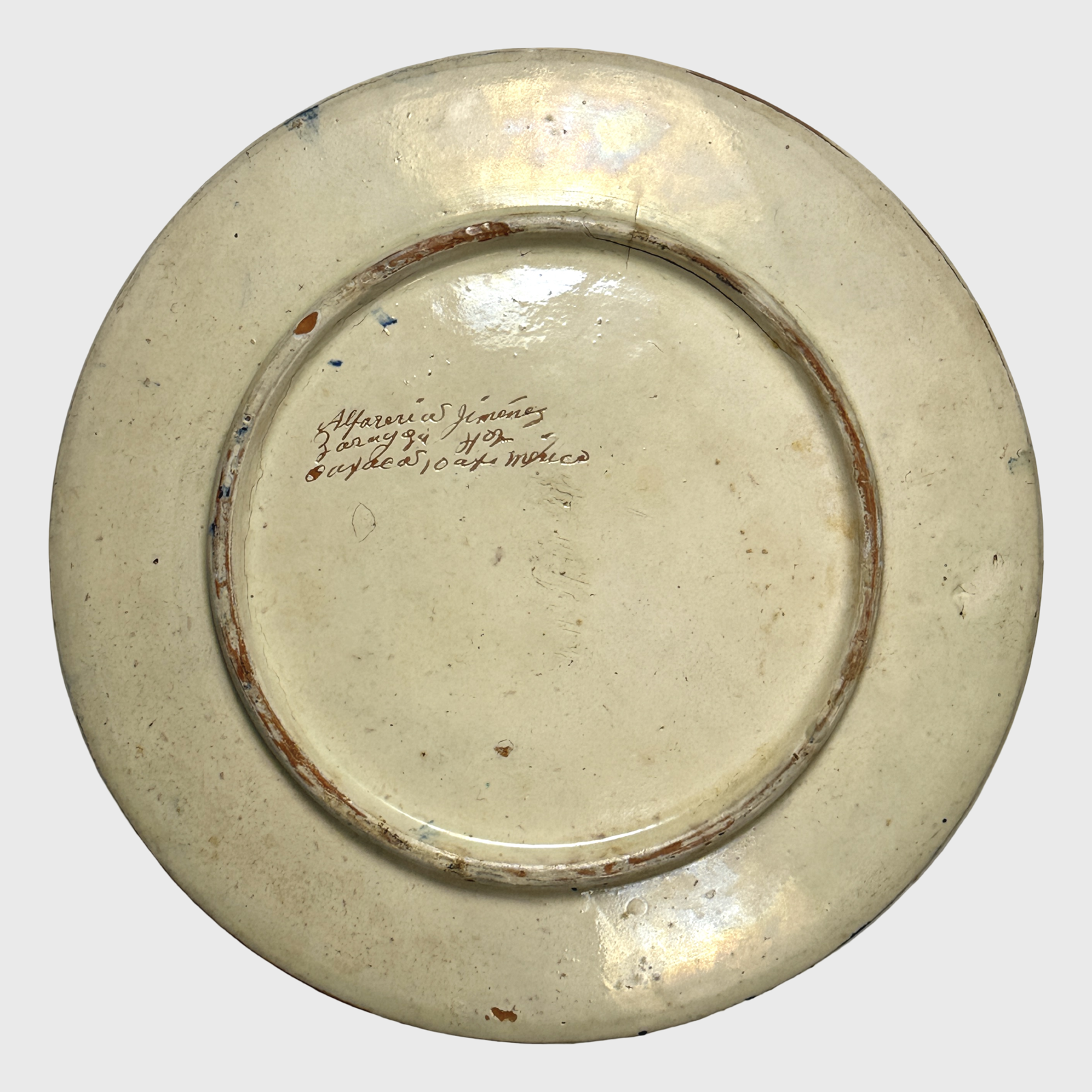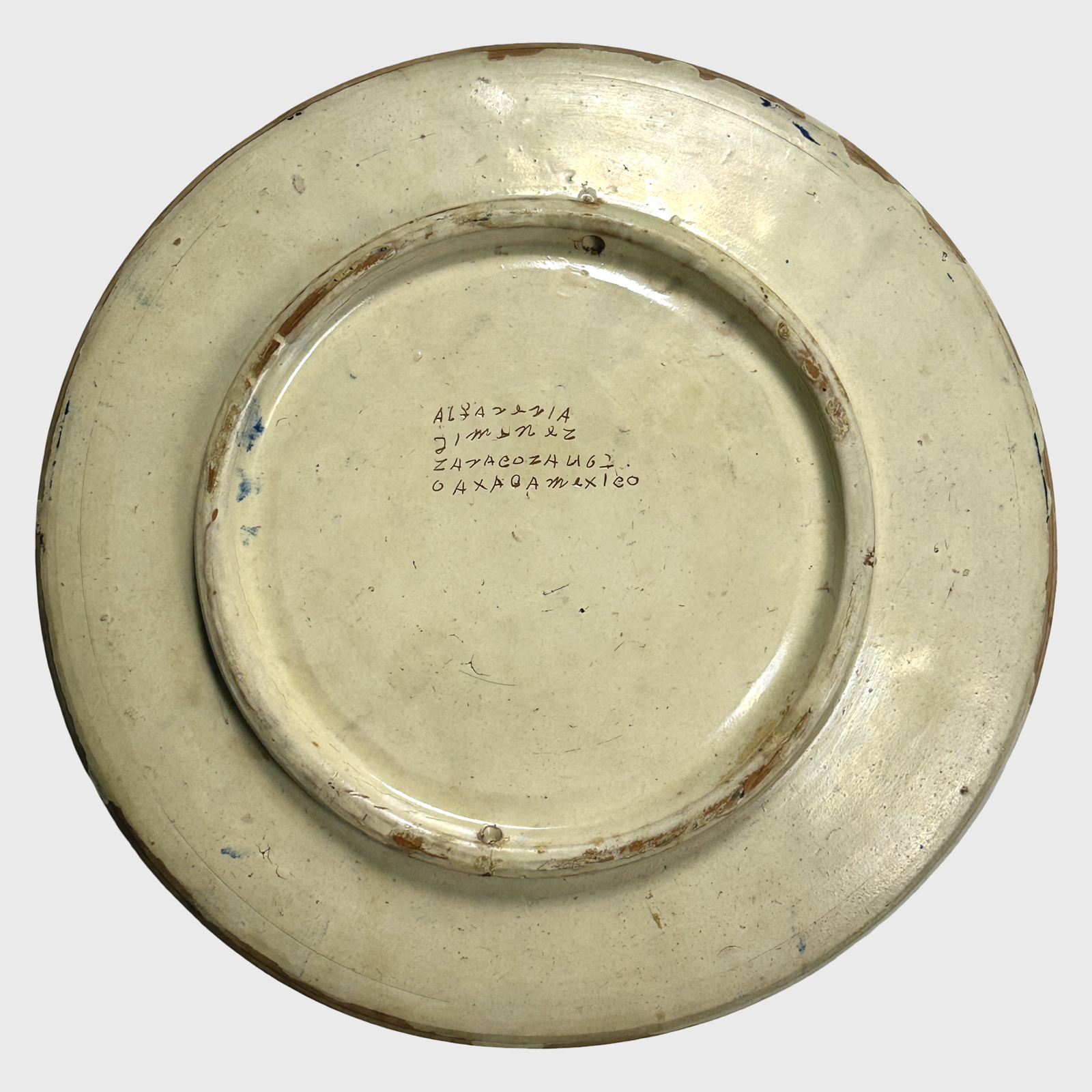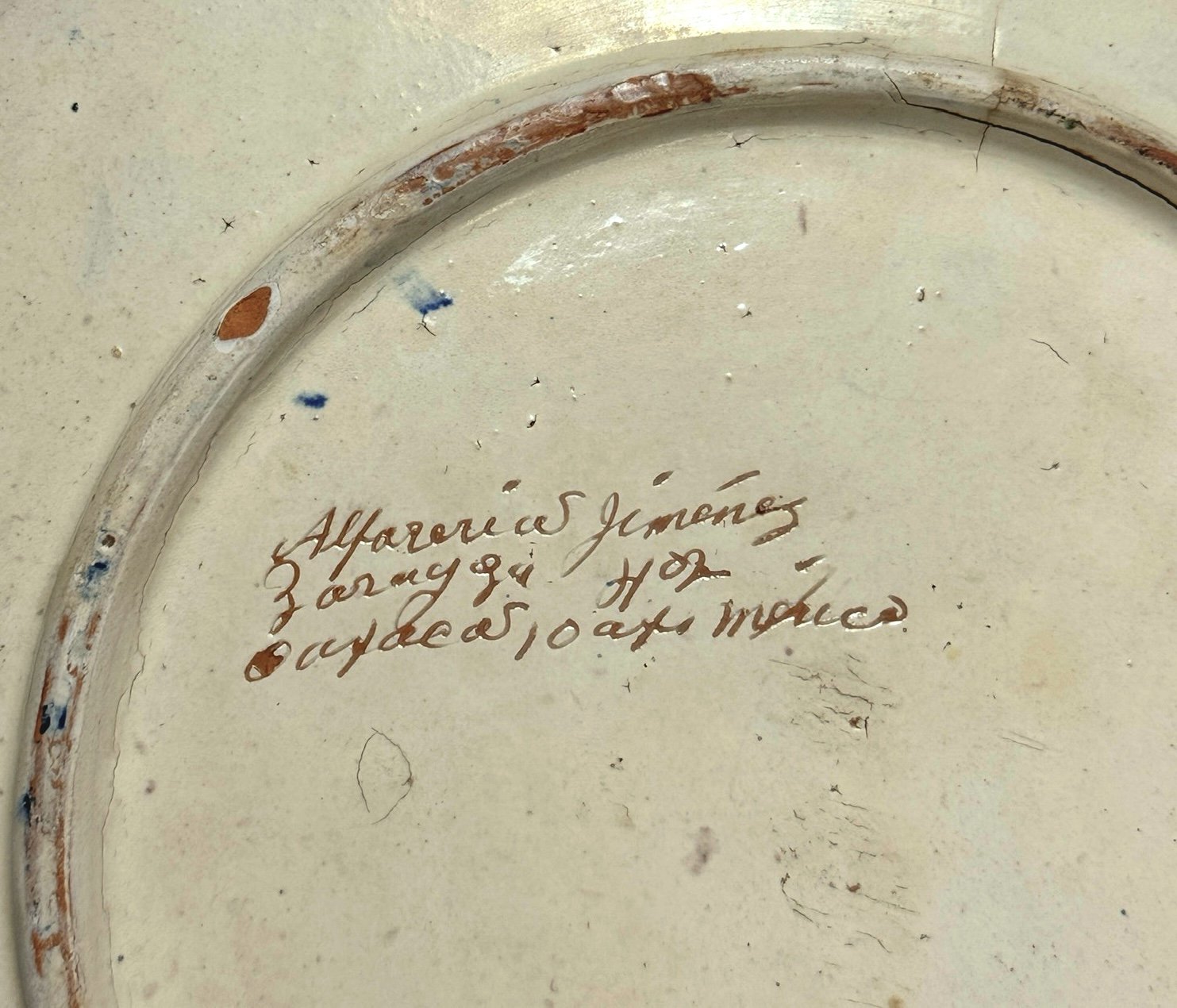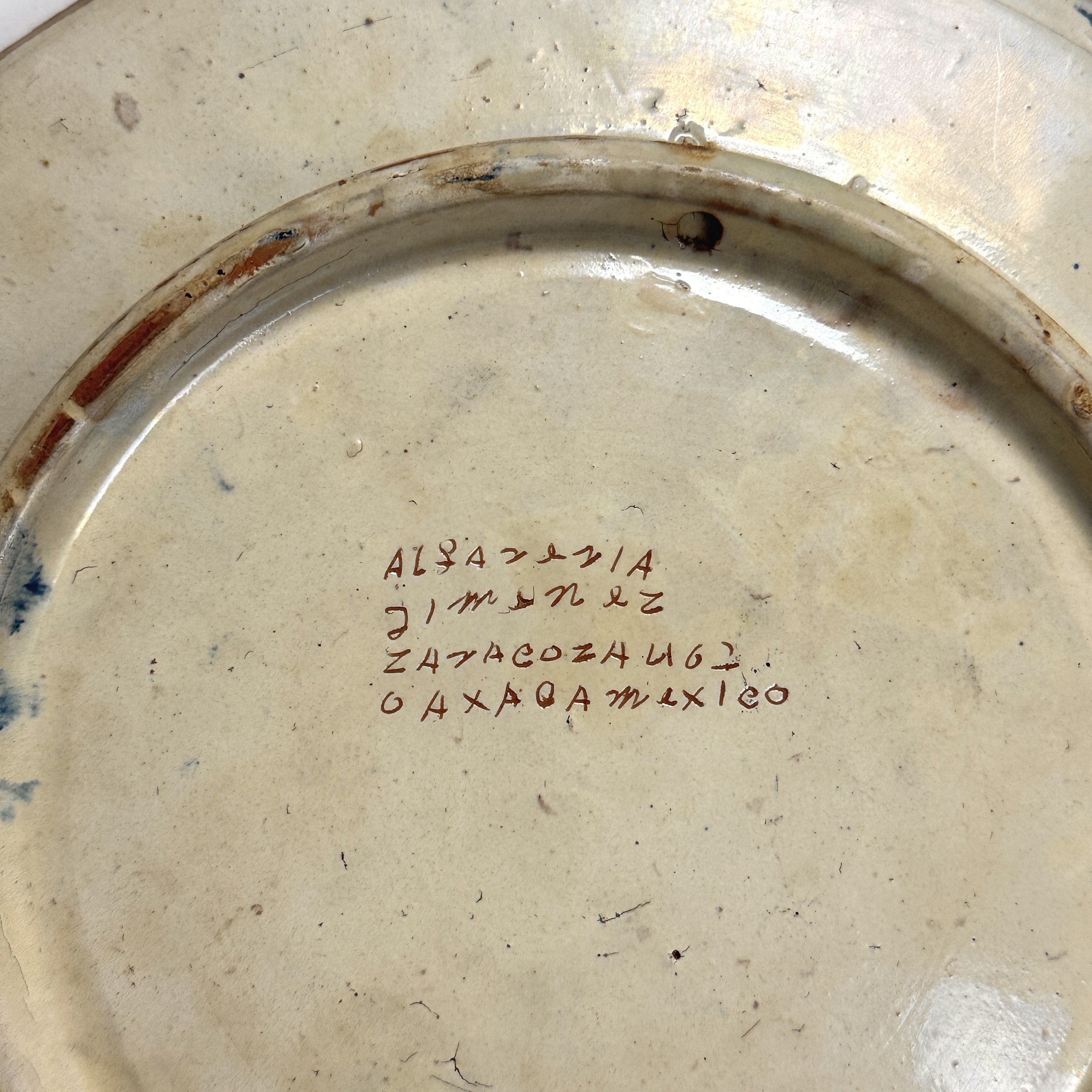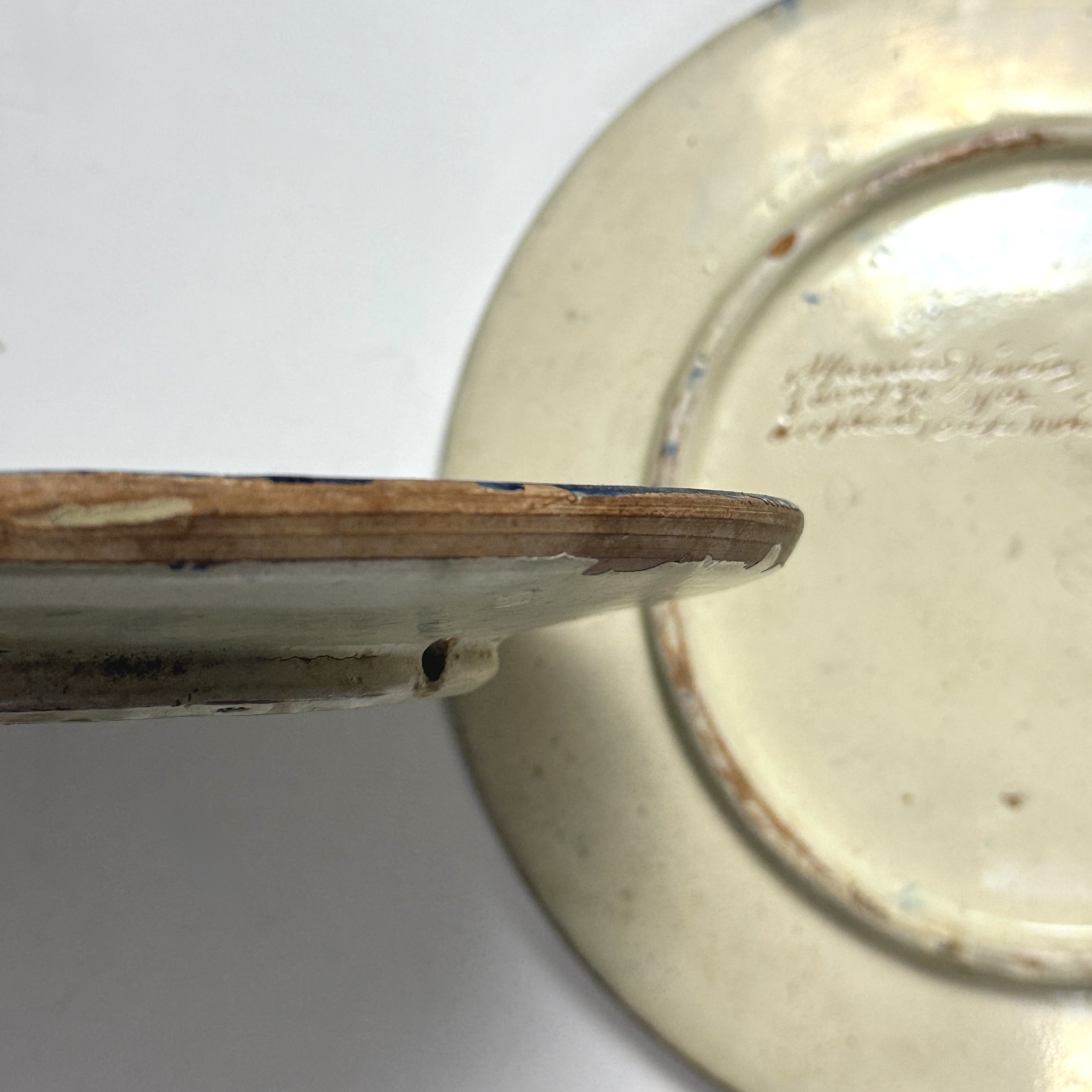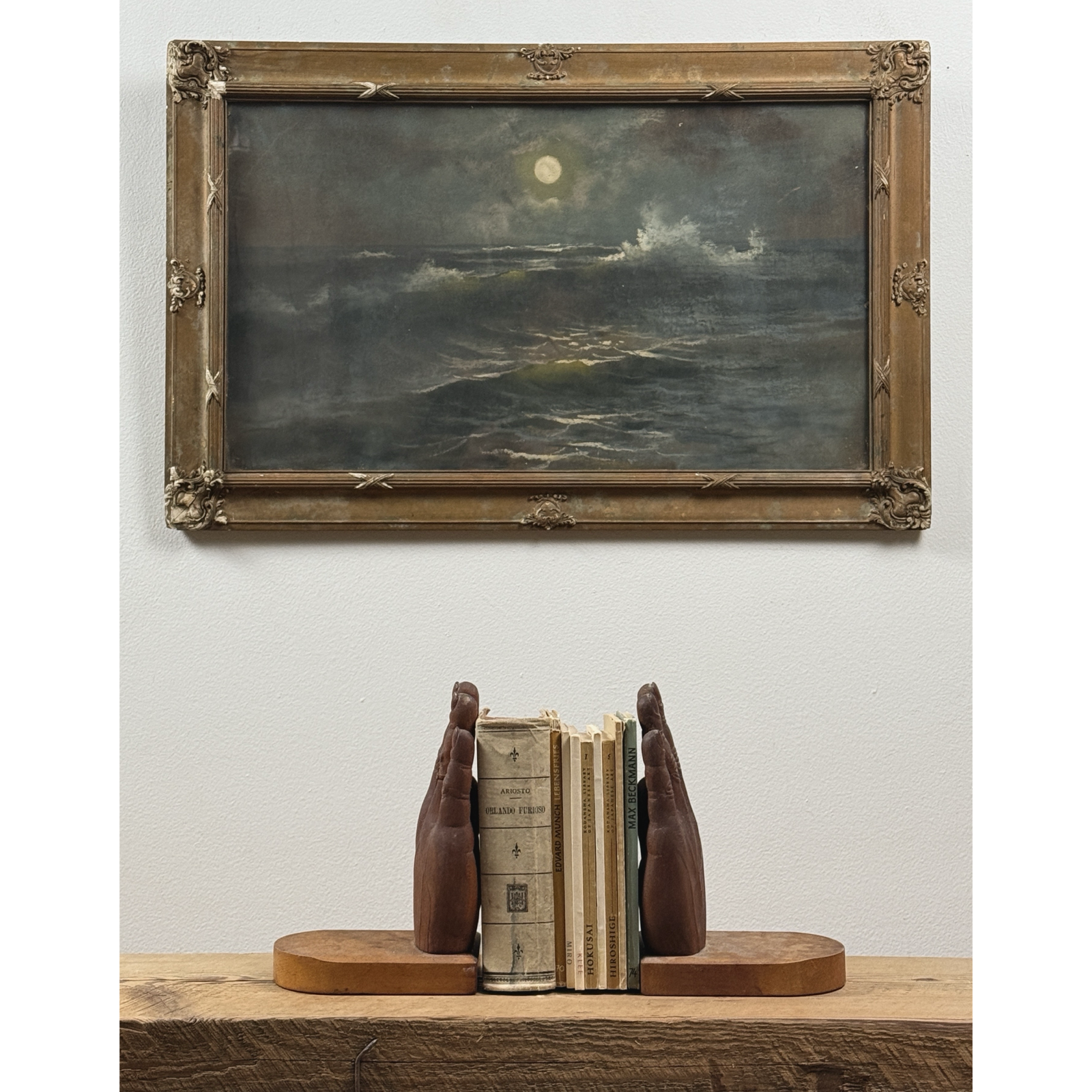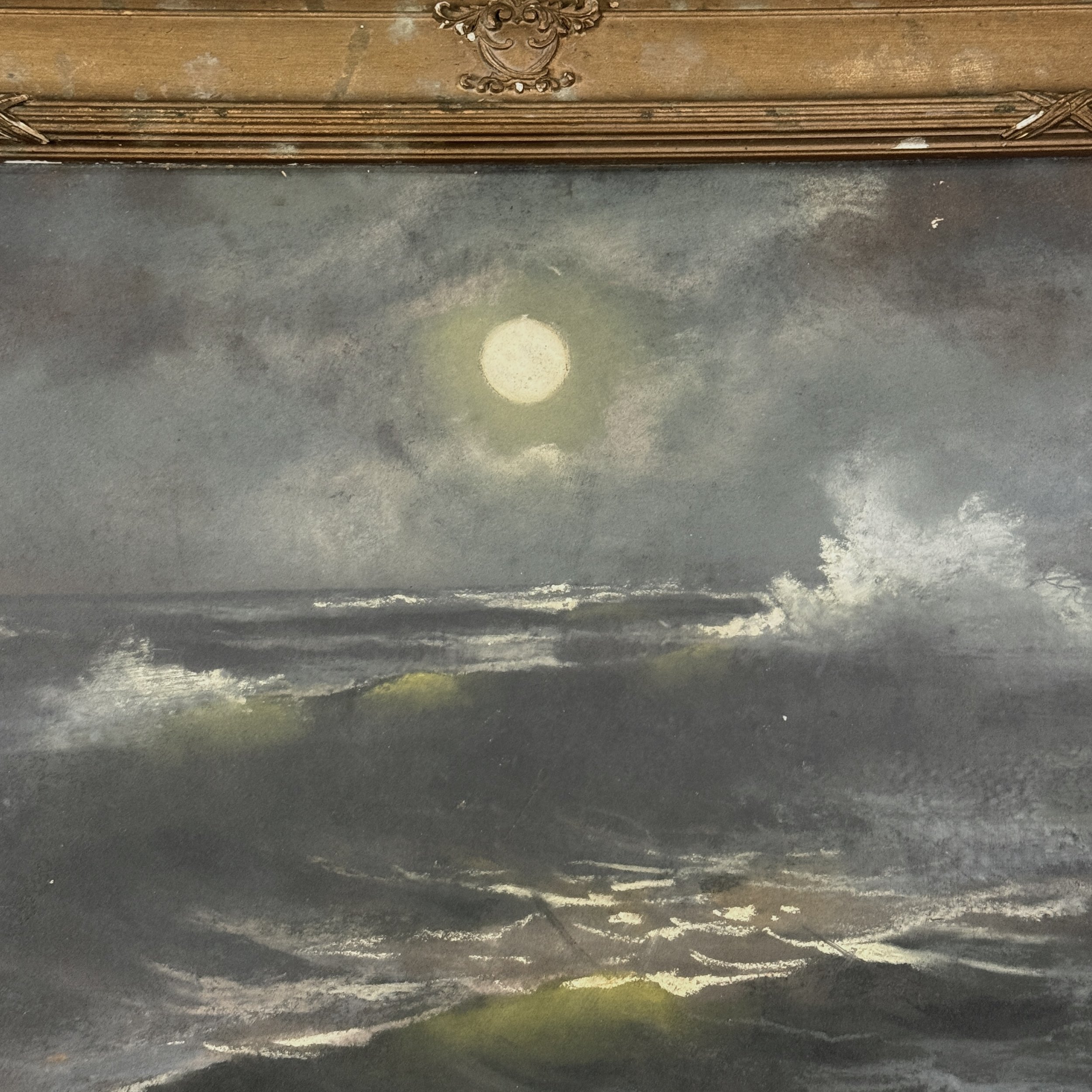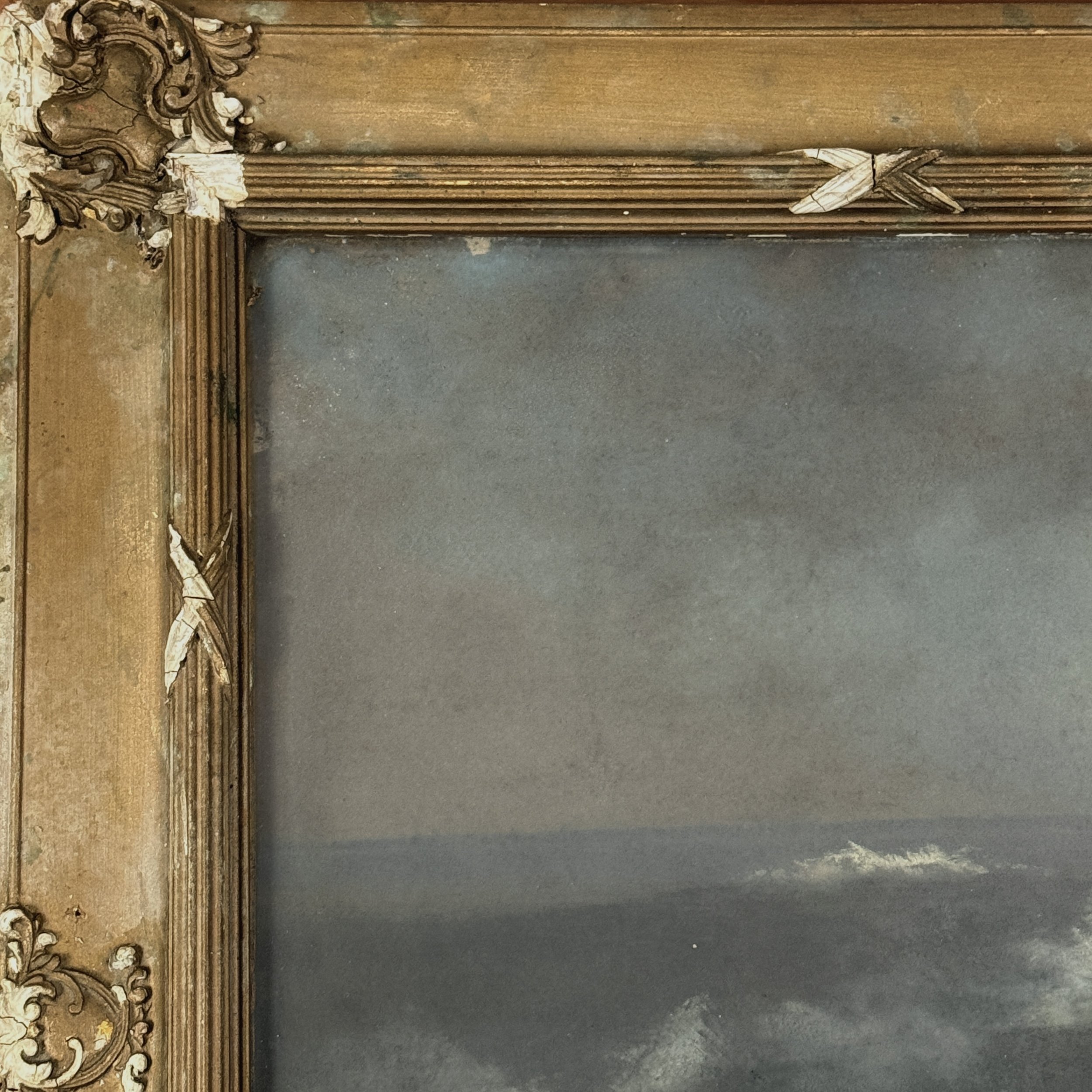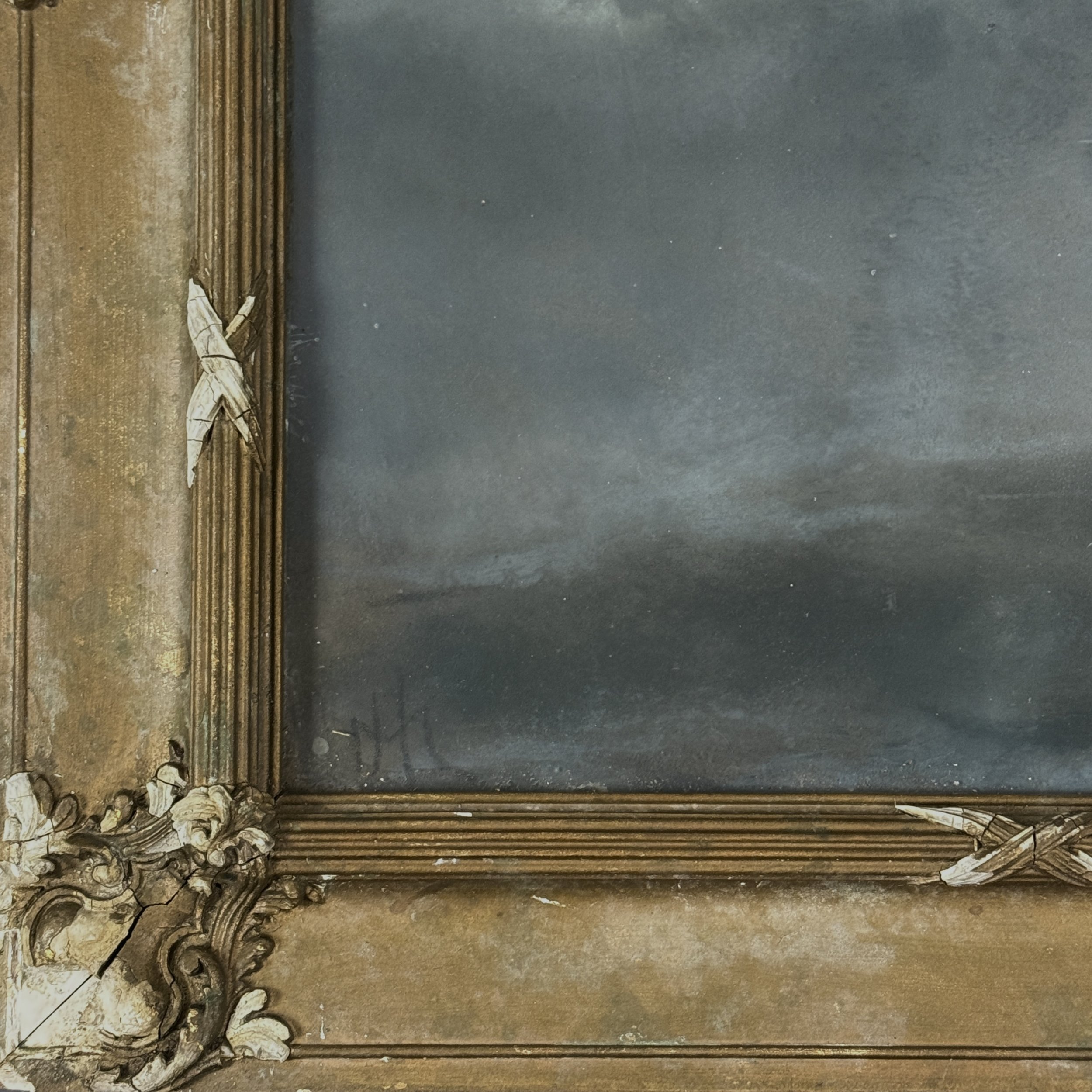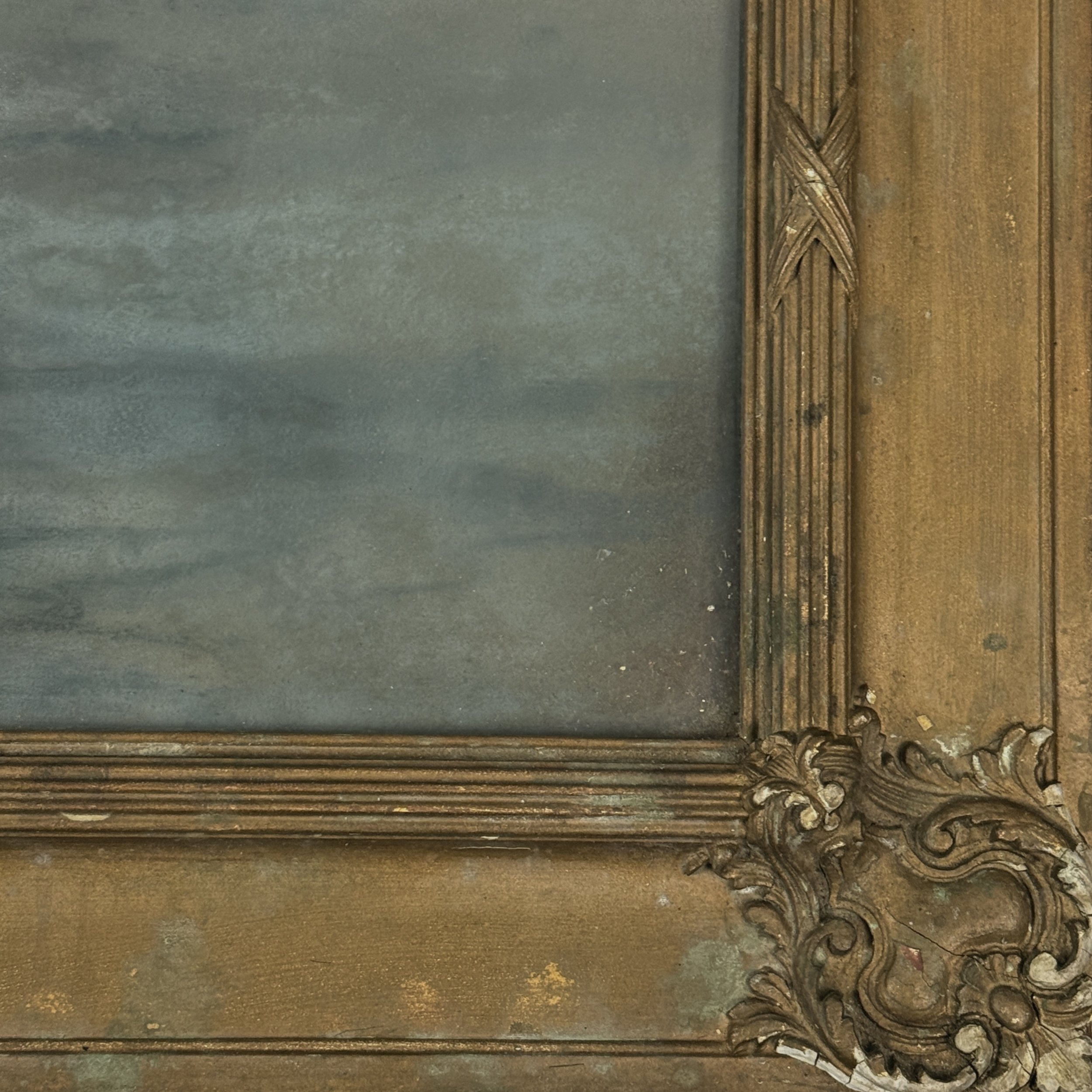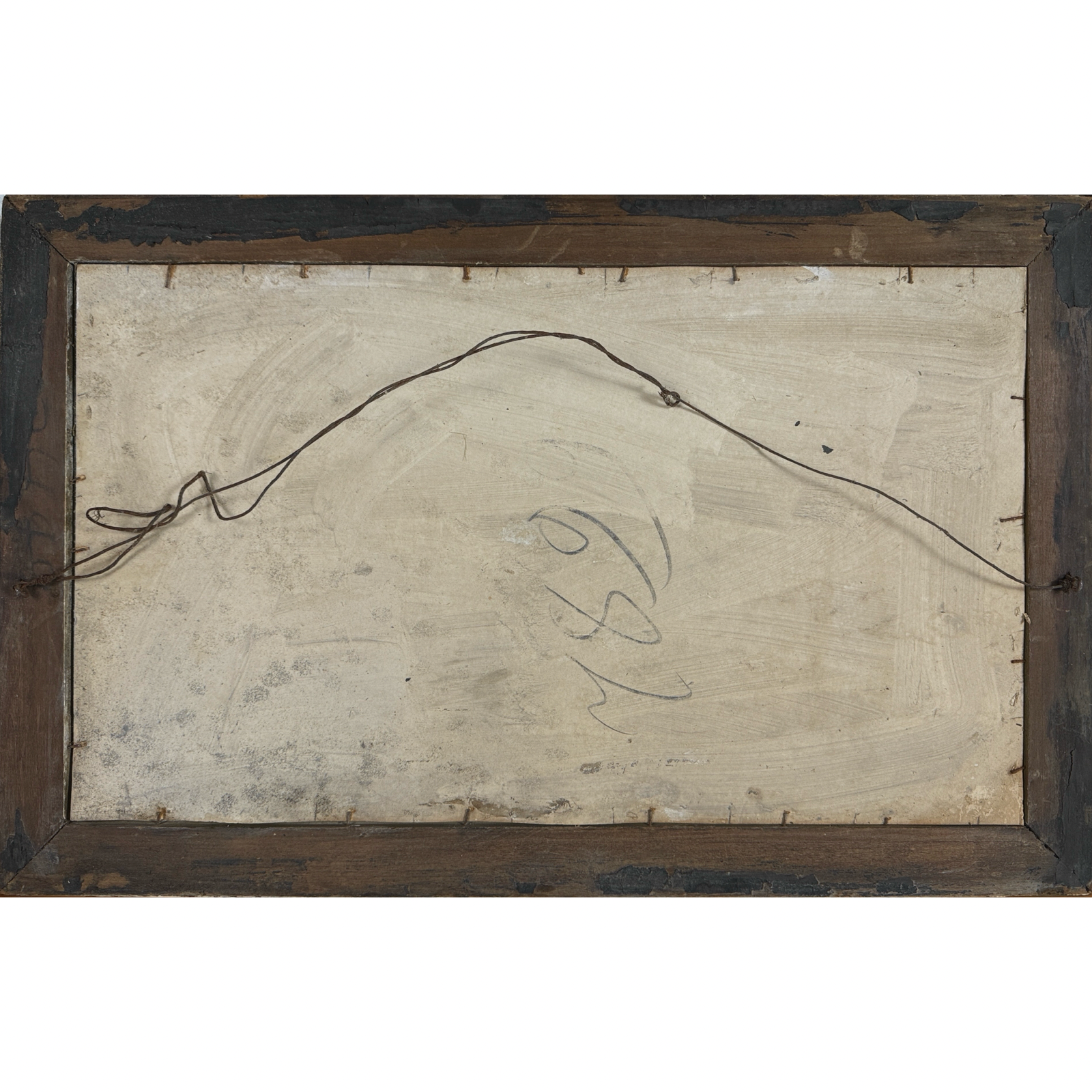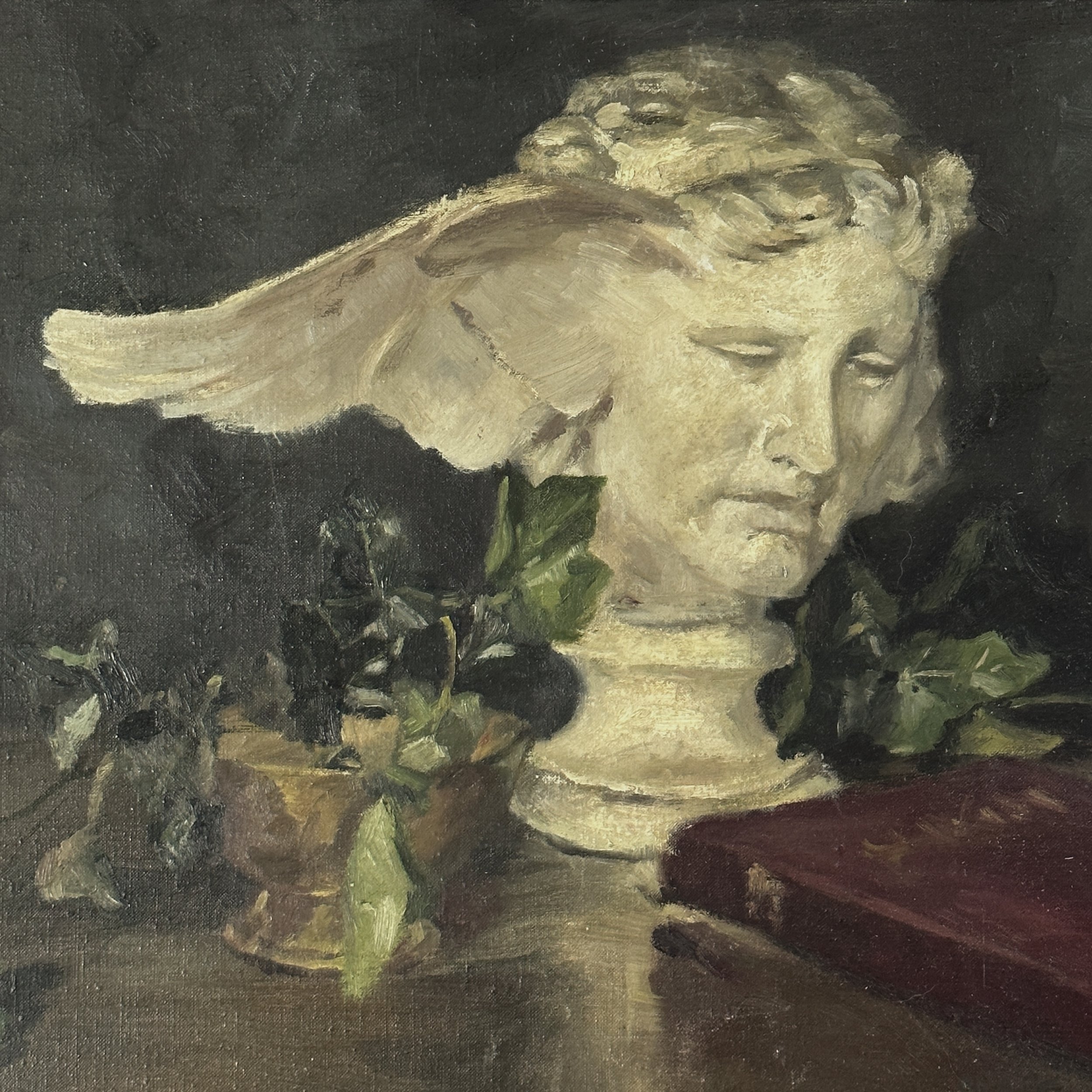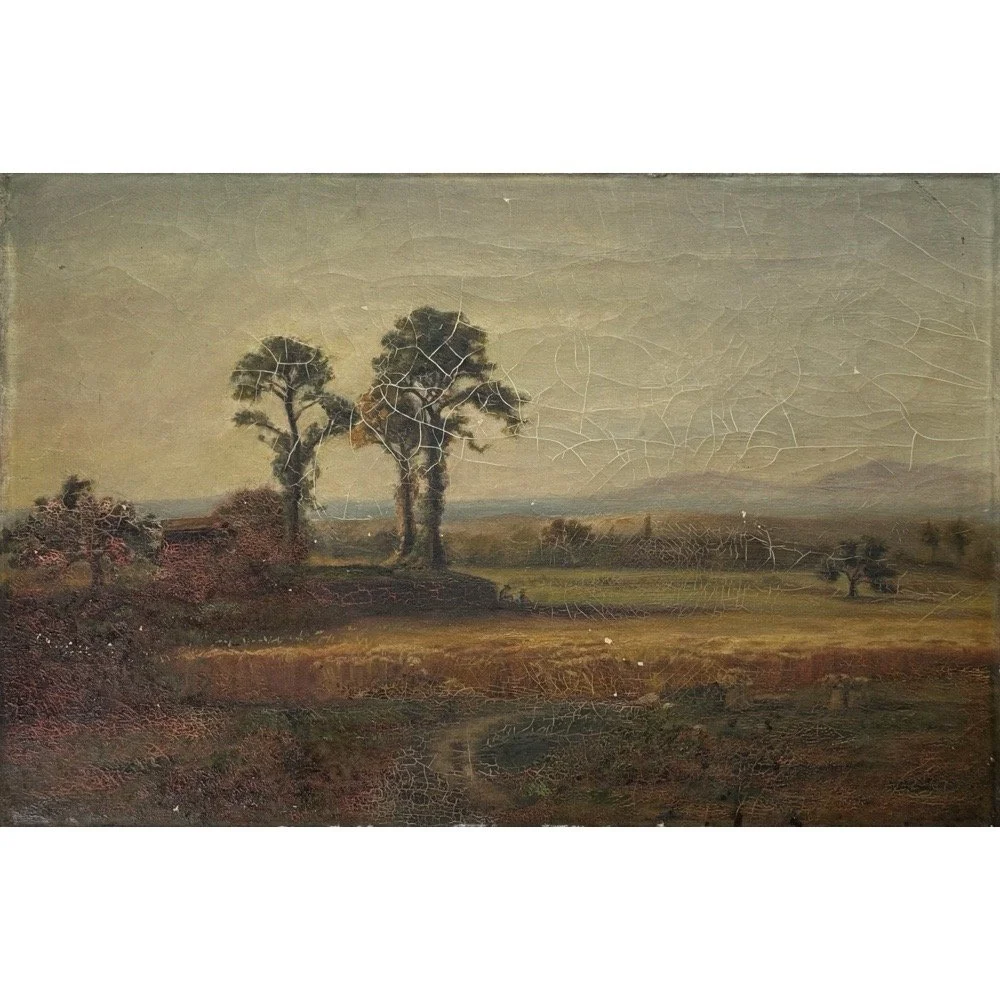 Image 1 of 8
Image 1 of 8

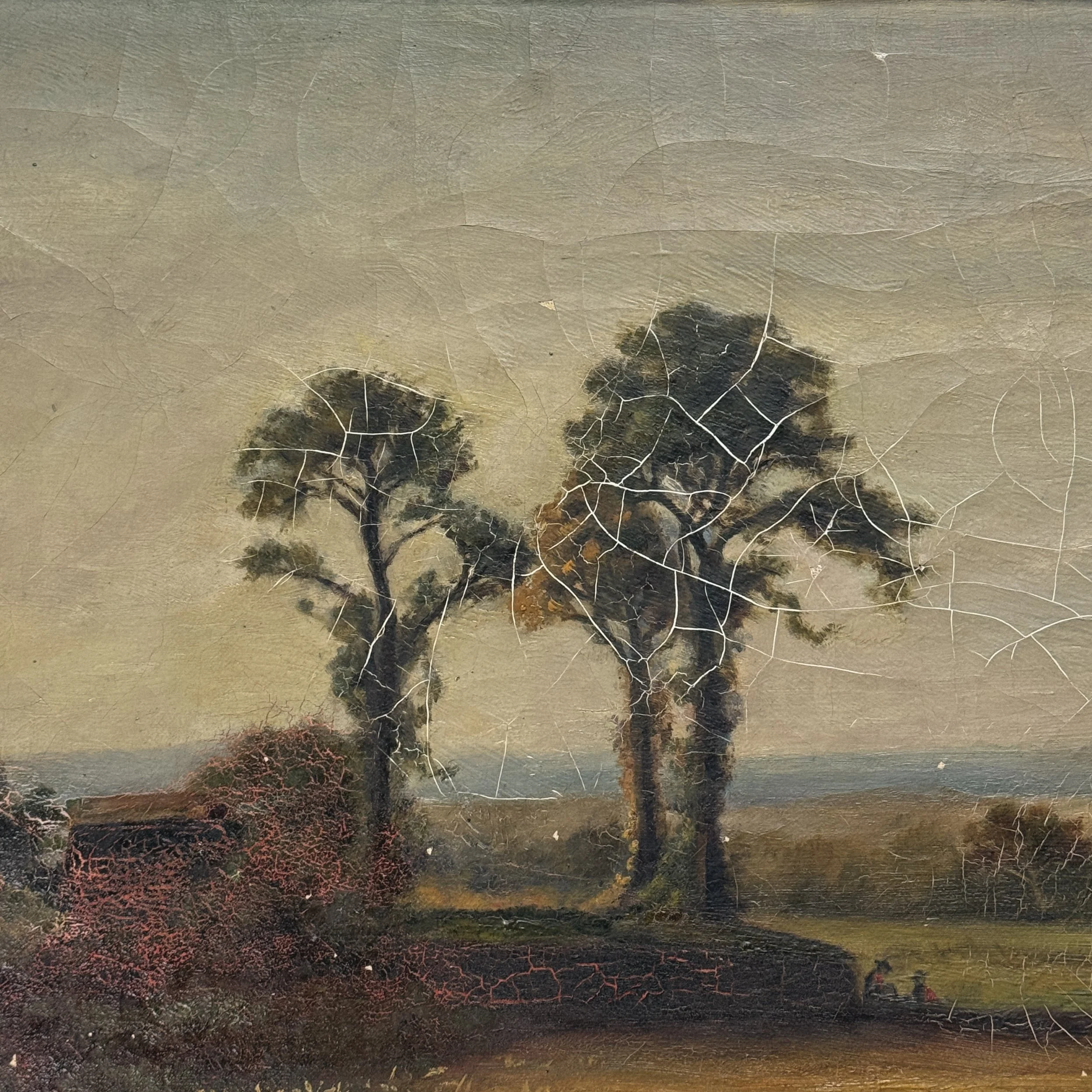 Image 2 of 8
Image 2 of 8

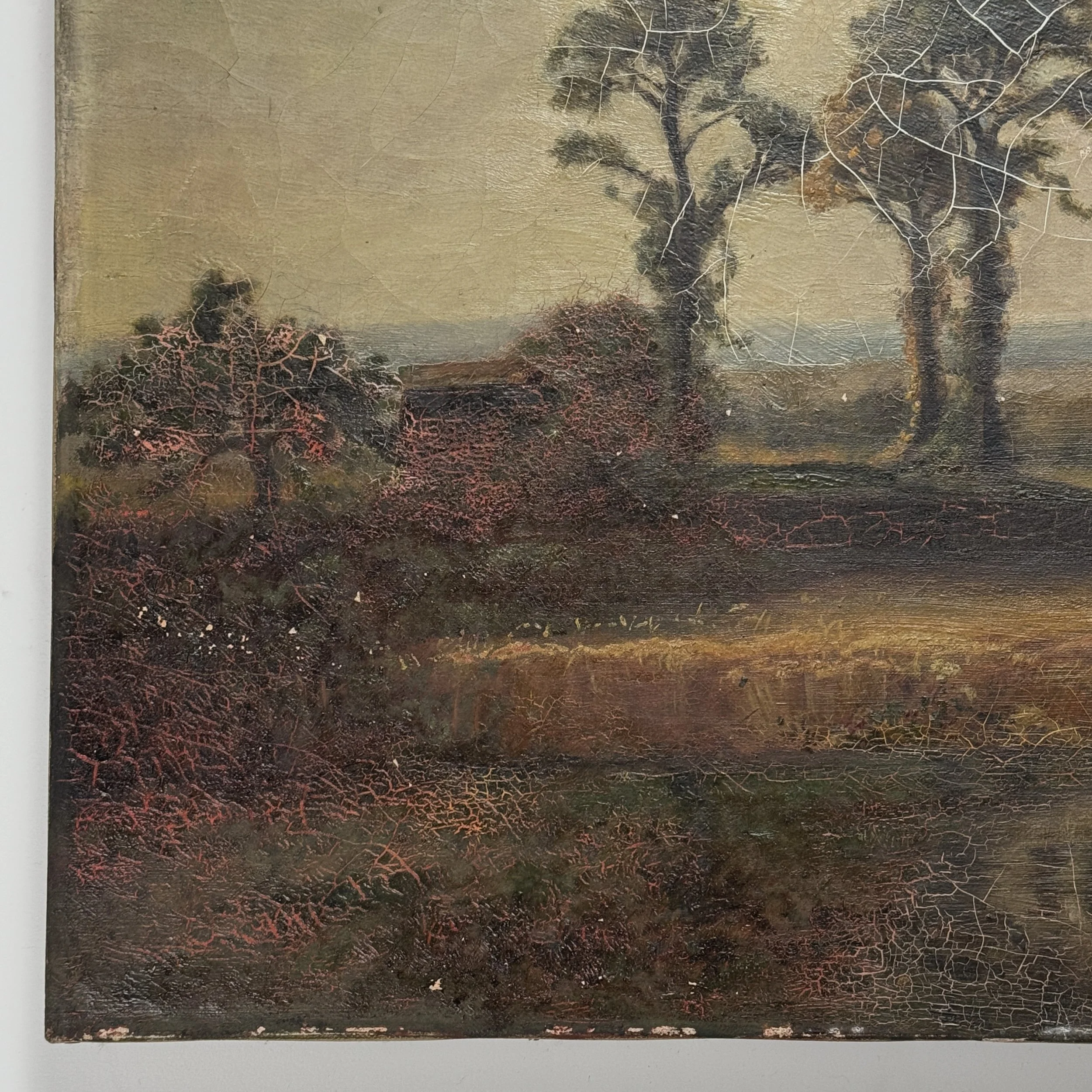 Image 3 of 8
Image 3 of 8

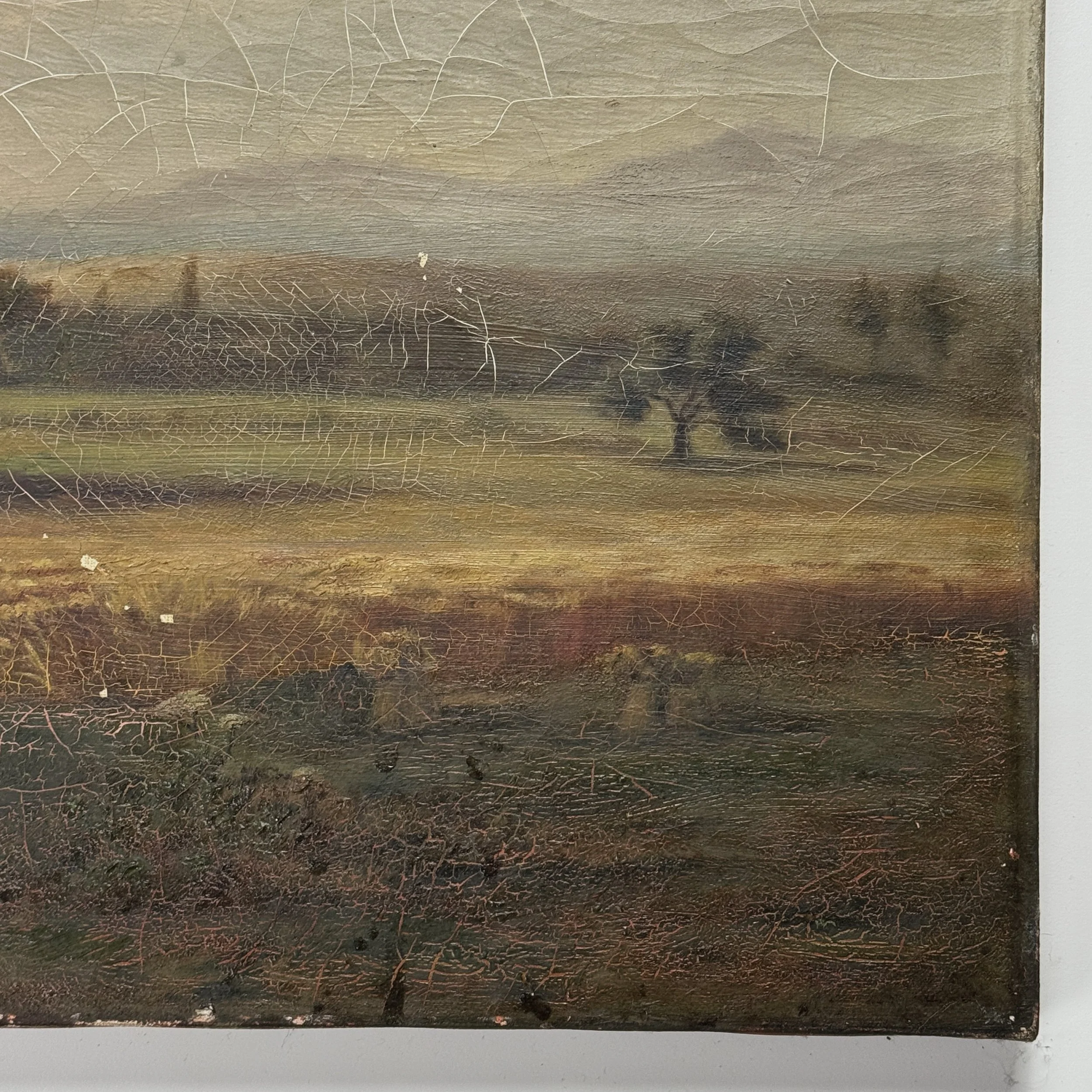 Image 4 of 8
Image 4 of 8

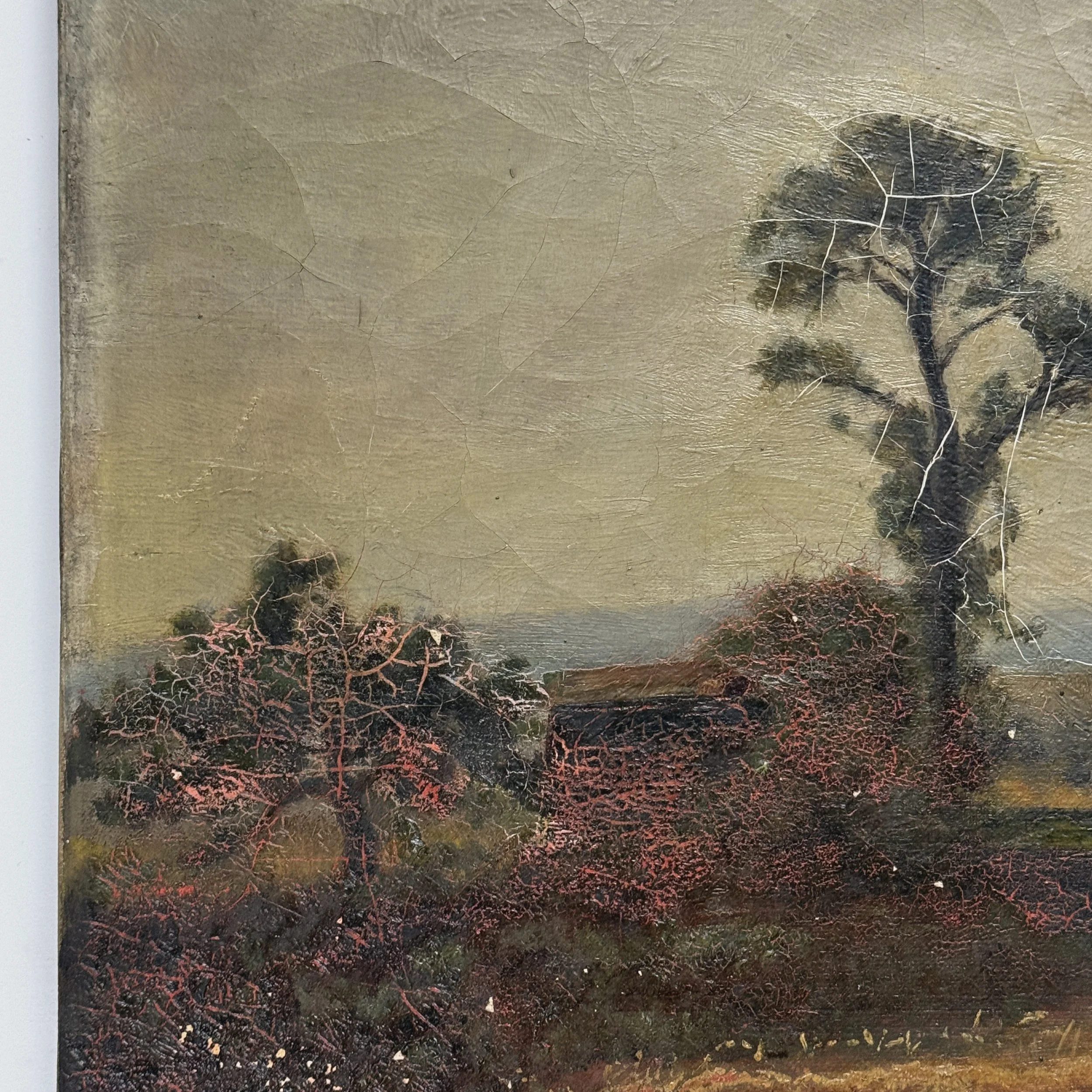 Image 5 of 8
Image 5 of 8

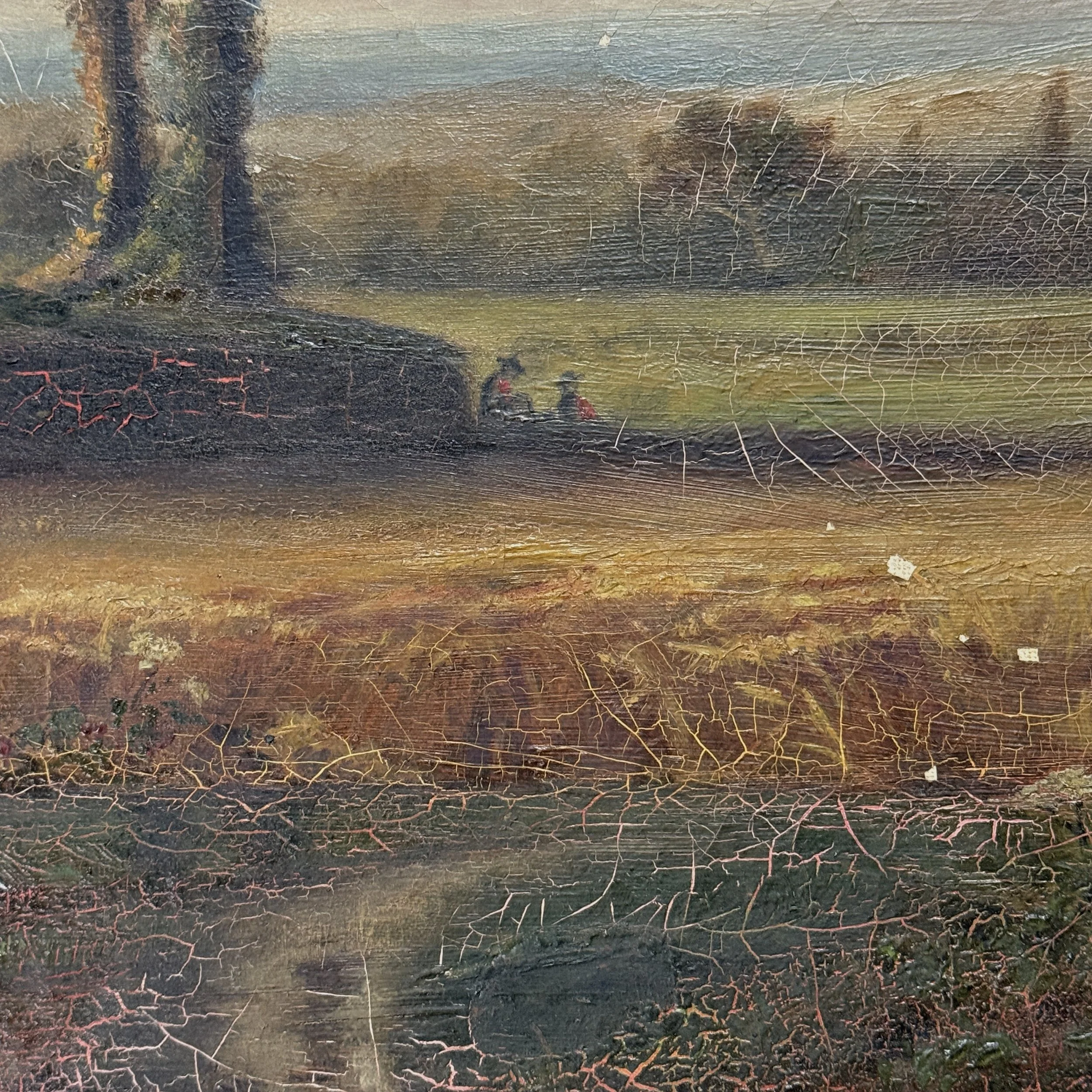 Image 6 of 8
Image 6 of 8

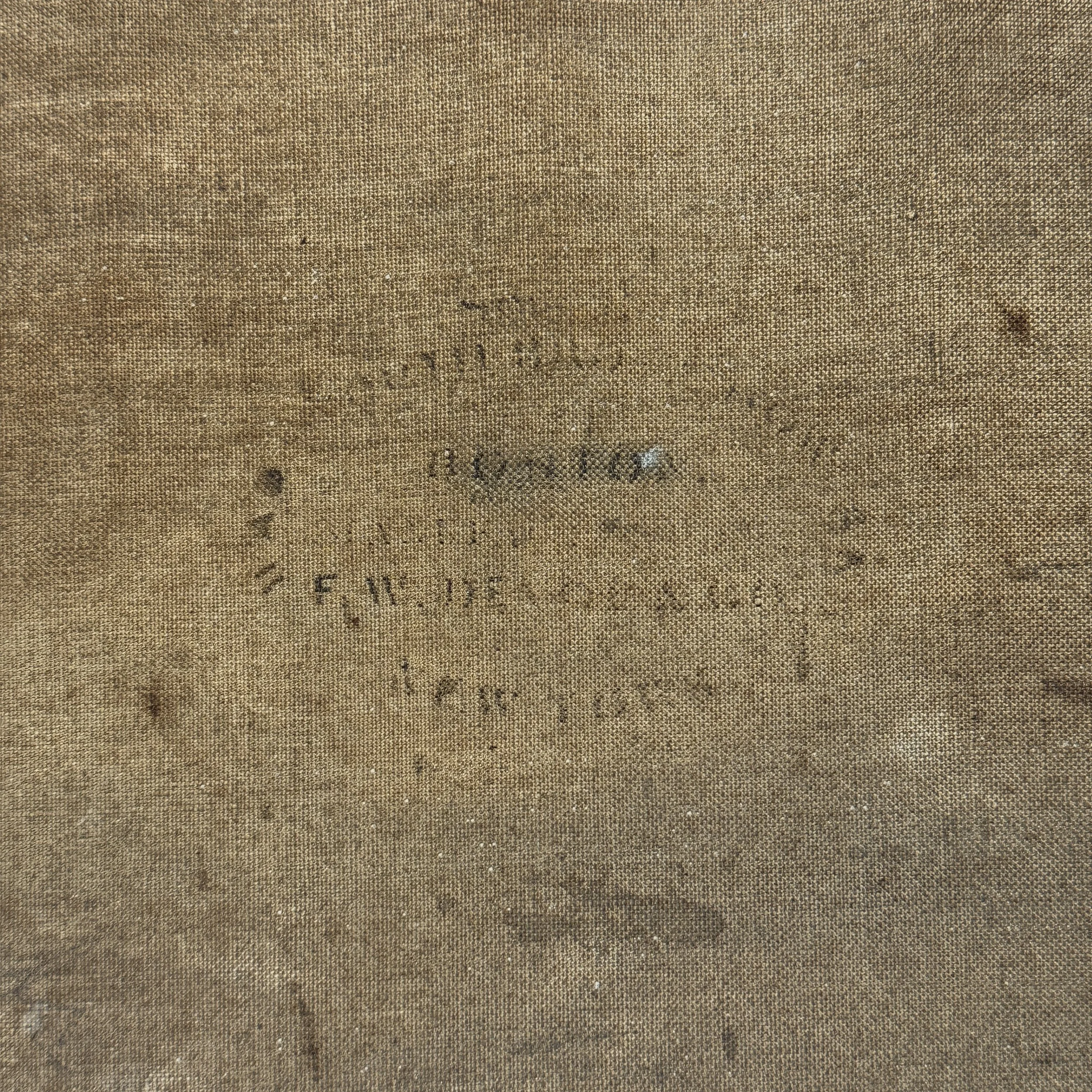 Image 7 of 8
Image 7 of 8

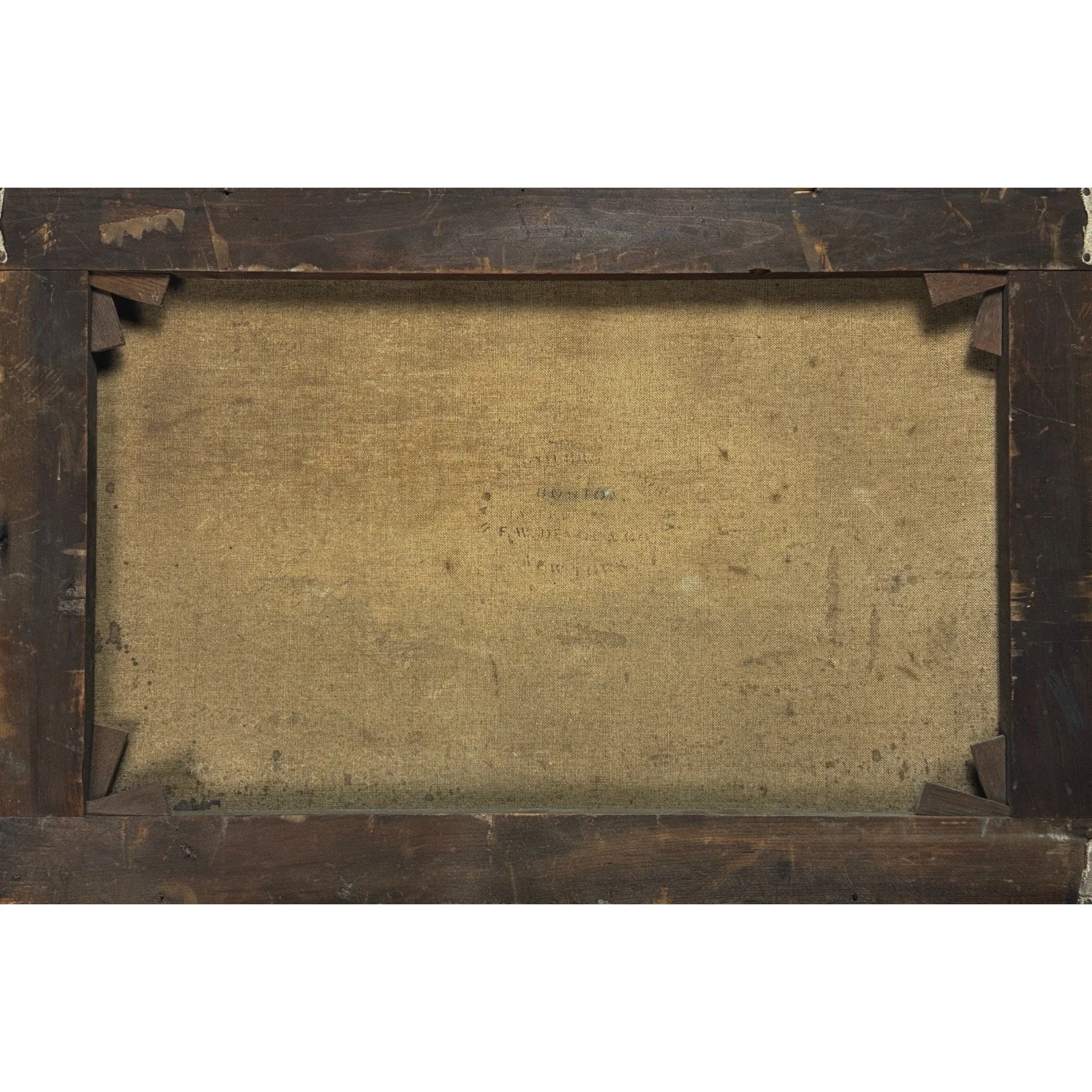 Image 8 of 8
Image 8 of 8









Late 19th Century Barbizon School Patinated Landscape with Two Figures
Late 19th Century Barbizon School Patinated Landscape with Two Figures
Oil on canvas
16 × 24 in.
A late 19th century landscape in the spirit of the Barbizon School, depicting two figures set within an atmospheric flat open terrain beneath a distant mountain range. The surface exhibits craquelure throughout, particularly in the lower section where the red ground layer has become visible beneath the paint film. The contrast between the dark masses of the trees and the fissures exposing the white ground beneath lends the work an aged, but surprisingly contemporary feel. Areas at the bottom feel like camera film that has been exposed to light.
The original canvas stamp remains visible on the reverse, with “New York” discernible at the bottom. The painting retains its original surface and has not been relined. In used condition with wear consistent with age and material stability.
Context:
The Barbizon School, active primarily in mid- to late 19th-century France, marked a pivotal transition from Romantic idealism toward naturalistic and direct observation of the landscape. Artists associated with the movement, such as Théodore Rousseau, Jean-François Millet, and Charles-François Daubigny, emphasized tonal harmony and an emotional engagement with nature—elements echoed in this work’s subdued palette and contemplative composition.
Late 19th Century Barbizon School Patinated Landscape with Two Figures
Oil on canvas
16 × 24 in.
A late 19th century landscape in the spirit of the Barbizon School, depicting two figures set within an atmospheric flat open terrain beneath a distant mountain range. The surface exhibits craquelure throughout, particularly in the lower section where the red ground layer has become visible beneath the paint film. The contrast between the dark masses of the trees and the fissures exposing the white ground beneath lends the work an aged, but surprisingly contemporary feel. Areas at the bottom feel like camera film that has been exposed to light.
The original canvas stamp remains visible on the reverse, with “New York” discernible at the bottom. The painting retains its original surface and has not been relined. In used condition with wear consistent with age and material stability.
Context:
The Barbizon School, active primarily in mid- to late 19th-century France, marked a pivotal transition from Romantic idealism toward naturalistic and direct observation of the landscape. Artists associated with the movement, such as Théodore Rousseau, Jean-François Millet, and Charles-François Daubigny, emphasized tonal harmony and an emotional engagement with nature—elements echoed in this work’s subdued palette and contemplative composition.

